Don't wanna be here? Send us removal request.
Text
Julien Temple Musicals: ABSOLUTE BEGINNERS (’86) and EARTH GIRLS ARE EASY (’88) By Raquel Stecher

Director Julien Temple has built his filmmaking career showcasing creative types. Musicians are his forte, although he’s also made films about poets, filmmakers and other artists. Best known for his music videos, he’s directed artists such as the Rolling Stones, Depeche Mode, Whitney Houston, Janet Jackson, Billy Idol, Van Halen and Paul McCartney. He became interested in filmmaking when he discovered the work of French filmmaker Jean Vigo, whom he would later direct a biopic about. He began working alongside the Sex Pistols and made his debut feature film The Great Rock ’N’ Roll Swindle (’80) about the band’s tumultuous break-up.
Temple had a front row seat at a time when music was revolutionizing culture but was also interested in how the music of the past influenced the present. Among his films are two outliers, a pair of films inspired by Temple’s love of Hollywood musicals: ABSOLUTE BEGINNERS (’86) and EARTH GIRLS ARE EASY (’88). An homage to the early days of rock ‘n’ roll, ABSOLUTE BEGINNERS was an adaptation of Colin MacInnes’ 1959 novel. Set in 1958 during the time of the Notting Hill race riots, it explores the cultural revolution of the time, when jazz was falling out of favor, rock ‘n’ roll was making a scene and teenagers were being recognized as a major influence on popular culture. Eddie O’Connell stars as Colin, a photographer who falls in love with fashion designer Crepe Suzette (Patsy Kensit) and gets caught up in the local music scene. The film features performances by Sade and Davide Bowie, two musicians Temple had previous directed music videos for.
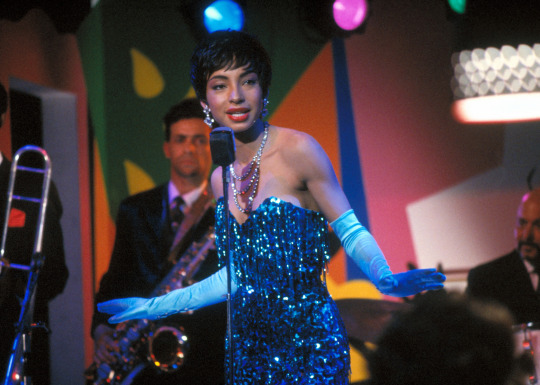
According to the website Supajam, ABSOLUTE BEGINNERS was at the time “the most expensive British film ever made.” When the shooting wrapped, Temple was fired. He had no involvement with the final editing, which was handled by three different editors. The end result was a musical that strayed from Temple’s vision. In an interview, Temple called the production “a half-nightmare, half-dream” and said that he wishes it would have come out differently. The film was a flop and bankrupted British movie studio Goldcrest Film International. Temple goes on to say in his interview with Supajam, “It was strange being accused of destroying the British film industry… for many decades, it seemed to be circling Pluto, but it seems to have made its way a bit closer back towards Earth these days.”
The film caught the eye of Michael Jackson and Janet Jackson. Temple is quoted as saying, “It turned out the Jackson family were fans, particularly Michael and Janet, who used to copy the dance sequences as it played on their cinema screen.” Temple went on to direct two music videos for Janet Jackson. “When I Think of You” pays homage to ABSOLUTE BEGINNERS urban setting and “Alright” is a throwback to the golden era of Hollywood musicals and features cameos by the Nicholas Brothers, Cab Calloway and Cyd Charisse.
When Temple left the UK to work in the US, he made another go at the musical feature film with EARTH GIRLS ARE EASY (’88). This science fiction romantic comedy musical hybrid starred then real-life couple Geena Davis and Jeff Goldblum in their third picture together. Written by Julie Brown, Terrence E. McNally and Charlie Coffey, the story follows California girl Valerie (Geena Davis) who, in the midst of romantic turmoil, is visited by three furry aliens: Jeff Goldblum, Jim Carrey and Damon Wayans. The aliens are given a makeover to best resemble humans and they cause a ruckus in the Valley with their new look.
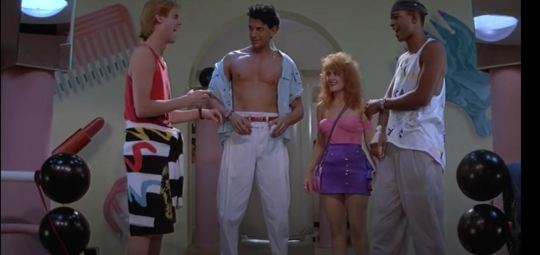
The movie is chock full of 1980s esthetics and slang, making it a nostalgic delight for anyone who lived through, or just loves, that era. It even includes a cameo by the mysterious lady in pink Angelyne, who was herself a precursor to today’s celebrity influencers. The film also serves as a throwback to 1950s science fiction films like Forbidden Planet (’56) and Earth vs. the Flying Saucers (’56). The trio of aliens learn human behavior and language from watching classics on television like Gun Fury (’53), Rebel Without a Cause (’55) and The Nutty Professor (’63).
Given his newfound reputation, Temple had a difficult time finding a studio or production company for the film. Warner Bros., MGM, 20th Century-Fox and New World Pictures all expressed interest but eventually turned it down. It was picked up by De Laurentiis Entertainment Group, which was set to distribute, but they filed for bankruptcy shortly after filming. The movie didn’t make a splash at the time, however it’s gone on to earn the cult classic status it so rightly deserves. EARTH GIRLS ARE EASY served as the inspiration for the Britney Spears and Iggy Azalea music video for “Pretty Girls” released in 2015.
#Earth Girls Are Easy#Julien Temple#1980s#musicals#retro#moder day musical#MTV#music videos#classic hollywood#TCM#Turner Classic Movies#Raquel Stecher
163 notes
·
View notes
Text
FATSO and THE HONEYMOON KILLERS by Susan King
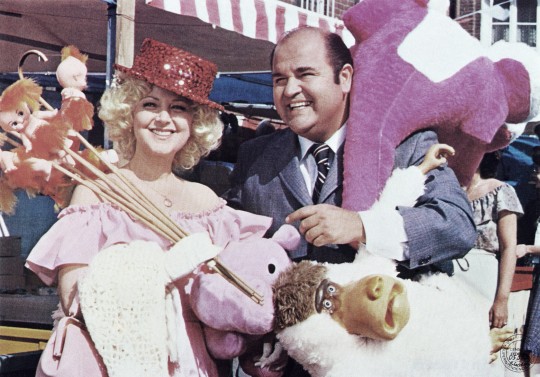
Being overweight is a traumatic experience both physically and emotionally. There’s depression, lack of self-worth, loneliness and the fear that no one will love you because of your size. Even if you lose weight, it’s still hard to believe in yourself due to past limiting beliefs. Over the years, filmmakers have explored this sensitive subject, including John Waters (Hairspray, 2007), Jane Campion (Sweetie, 1989) and P.J. Hogan (Muriel’s Wedding, 1994).
Oscar-winning actress Anne Bancroft came up with the idea for FATSO (1980), her only feature film as a director, at AFI’s Directing Workshop for Women in the mid-1970s, where it was developed as a short film. The first film produced by her husband Mel Brooks’ Brooksfilm, FATSO is a comedy about Dominick DiNapoli (Dom DeLuise), an overweight New York shopkeeper whose late mother always fed him as a child whenever he was upset. Now, his eating is out of control. He still lives at home, and his nagging sister (Bancroft) and her family reside downstairs in a two-family brownstone, while Dominick and his brother, exasperated Frank Jr. (Ron Carey), live upstairs. When their 39-year-old extremely overweight cousin Sal suddenly dies, Bancroft’s Antoinette harps and nags her brother to see a diet doctor. When the diet doesn’t work, she enrolls him in a “Chubby Checkers” support group. It’s only when he meets Lydia (Candice Azzara), a neighboring shopkeeper, that he tries to turn his life around.
Critics basically trounced FATSO when it was released 41 years ago. Roger Ebert actually gave it a one-star rating. Gene Siskel declared it “an emaciated script idea. Two basic dramatic approaches to fatness are to regard it as comic, or tragic. Anne Bancroft has somehow avoided both approaches in FATSO, a movie with the unique distinction of creating in its audiences an almost constant suspense about how they are supposed to be react.”
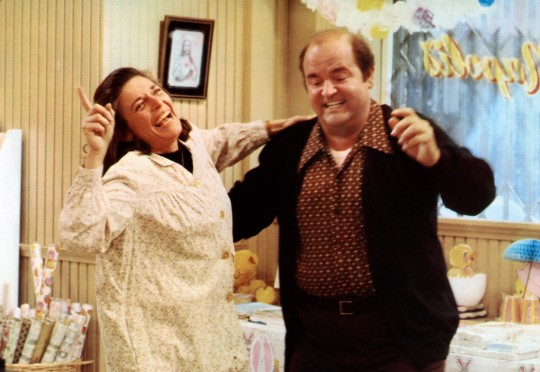
However, the film has grown in reputation over the years and was even included in a retrospective on liberating Hollywood women directors in the 1970s at the UCLA Film & Television Archive in 2019, describing the film as a “hilarious, heartwarming comedy.” That’s a bit of hyperbole. DeLuise, who rarely got a chance to really show his comic brilliance in film and television, is the best thing about FATSO. He’s funny and poignant and has chemistry to spare with Azzara.
And Bancroft does show just how hard it is to lose weight. In one sequence, Dominick convinces his brother to padlock the fridge and the pantry only to threaten him with a knife in the middle of the night to unlock them. Depressed at his behavior, he calls the Chubby Checkers (Richard Karron and Paul Zegler) for help. But when they start talking about food, the trio goes crazy in the kitchen and eats everything in sight.
When he decides to propose to Lydia only to discover she’s not home, Dominick goes crazy and eats $40 worth of Chinese take-out. Just as Siskel noted, Bancroft tries to make these scenes funny but, in fact, they are incredibly sad. Though Bancroft excelled at comedy as an actress and was married to a comic genius, she had problems writing and directing comedy. Though he’s considered fat in the film, DeLuise is just pleasingly plump. He’s nowhere near the 325 pounds he was later in his life. FATSO did change the lives of the two Chubby Checkers played by Karron and Zegler. They both lost a substantial amount of weight over the years.
Just like Bancroft, the shockingly riveting thriller THE HONEYMOON KILLERS (1970) was the sole film written and directed by composer Leonard Kastle. He actually wasn’t the first director on the film; however, Martin Scorsese was given the pink slip after the first week because he was taking too long. Noted as Francois Truffaut’s favorite American film, THE HONEYMOON KILLERS vividly depicts the self-esteem issues many have when being overweight.
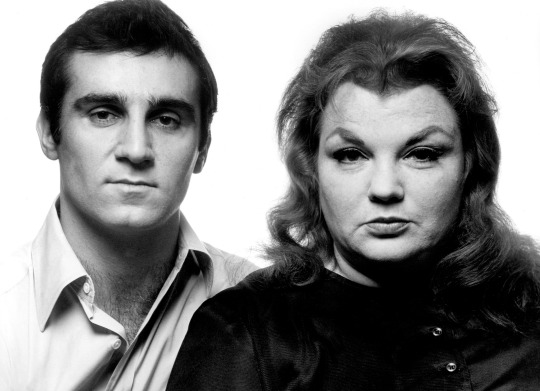
A grim nurse, Martha (Shirley Stoler, the Nazi guard in Seven Beauties, 1975), lives at home with her nagging friend Bunny (Doris Roberts) who keeps telling her to lose weight. The more stressed Martha gets, the more she eats. In fact, eating has almost become sex to her whether she’s devouring chocolates, cookies or even a pretzel. But she desperately wants to fall in love but fears her weight will prevent her from finding a man.
Unbeknown to Martha, Bunny has submitted her name to a “lonely hearts” club and soon she gets a letter from Ray Fernandez (Tony Lo Bianco) from New York City. He soon visits Martha in Alabama where he seduces her and convinces her to give him a loan. After he leaves, Ray writes her a Dear Jane letter. Threatening to commit suicide, Ray allows her to visit him in New York where he reveals he’s a gigolo/con man who seduces and swindles lonely women. Because she is so lovesick and doesn’t want to lose him, she accompanies him on his jobs posing as his “sister.”
THE HONEYMOON KILLERS was inspired by the true story of Raymond Fernandez and Martha Beck, the legendary “lonely hearts killers” of the 1940s, who were executed at Sing Sing in 1951. Even 51 years after its release, THE HONEYMOON KILLERS is very disturbing. Not only are the murders gruesome, but Martha’s mistreatment as a “fat girl” has turned her into a psychopath. She will do anything and everything to keep her man even attempting to drown herself when she hears Ray trying to seduce one of his conquests at the riverbank. In an interview, producer Warren Steibel stated “we wanted to do an honest movie about murders. These are not charming people. They are sleazy people-but fascinating. You won’t come out of the theatre feeling sorry for the killers like in some movies. It is not romanticized.”
While these films aren’t necessarily positive portrayals of body weight, and it should be noted that each were made by directors who themselves were not overweight, both are iconic in their focus on fatness and its perception during the time in which these films were made.

92 notes
·
View notes
Text
The Visual Mastery of RUN LOLA RUN (’98) By Raquel Stecher
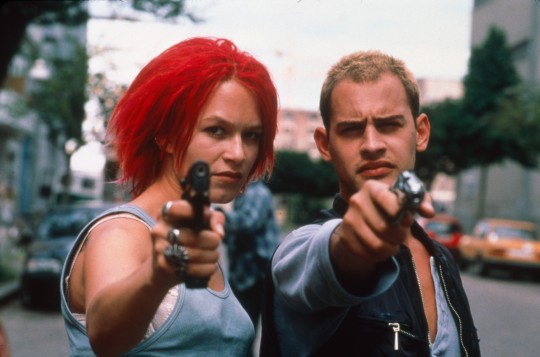
Half the fun of watching German director Tom Tykwer’s thriller RUN LOLA RUN (’98) is reveling in all of the visual details. There is so much to take in from Frank Griebe’s excellent cinematography to the brilliant use of color and objects that enhance the film’s themes. RUN LOLA RUN stars Franka Potente as Lola, a young woman who must secure 100,000 Deutschmarks and deliver the money to her boyfriend Manni (Moritz Bleibtreu), who desperately needs the cash to pay off a violent gangster. Lola has 20 minutes to complete her mission. The film explores three different outcomes as Lola encounters a variety of obstacles along the way.
Let’s first look at the film’s brilliant use of color. Red and yellow are strategically associated with the two lead characters. Lola is presented with the color red. Her hair is dyed bright red, and each of the three-time loops begins with her hanging up a red phone. Red continually appears at various points in her story, whether it’s a bicycle thief wearing a red shirt or her carrying a red bag full of cash. The image of Potente wearing a red wig and running through the streets of Berlin has become the visual symbol of RUN LOLA RUN and usually the first thing that people will remember about the film. Yellow is Manni’s color. He calls Lola from a yellow telephone booth as he contemplates robbing the grocery store across the street, which just happens to be adorned with yellow fixtures and trim.

Red can be seen to symbolize passion but is also represents speed, especially since Lola is moving at such a frantic pace. Yellow is the complete opposite. It symbolizes the tension-filled act of waiting. This can be observed in one particular scene in which workers dressed in yellow hazmat suits carry a large piece of glass from one side of the street to another. They are confronted with a red ambulance driving at a high speed to bring a cardiac patient to the hospital. This scene is played out in each of the three scenarios with a different result. In other scenes, Lola passes a yellow subway tram, a visual reminder that time is passing and Manni is waiting for her.
One of my favorite, and a bit more subtle, use of color in the film is when green is associated with some form of authority. When Lola visits her dad’s bank to ask for money, his office is adorned with green furniture and a large green painting that Lola rips off the wall in anger. In one scenario, policemen driving green and white vehicles and dressed in green uniforms confront Lola and Manni.
Because the film is so focused on time—not only how Lola is pressed for time but also how one small act can change one’s destiny—clocks and watches are important symbols that pop up throughout the film. There is a big ornate clock in Lola’s bedroom, the face of which is taped over with green stickers, which could be seen as a symbol of how time exerts its authority over her. Manni is constantly checking the clock that hangs above the grocery store entrance, Lola shatters the glass clock in her father’s office with her ear-piercing scream and an old lady checks her watch to give Lola the time. In the casino scene, Lola chooses to play the number 20 on the roulette wheel, which plays to the fact that she only has 20 minutes on the clock to finish the job.
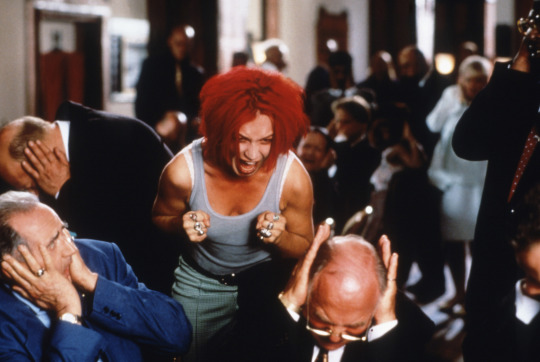
Tom Tykwer drew a lot of inspiration from Alfred Hitchcock’s classic thriller VERTIGO (’58). For the casino scene, Tykwer had production designer fill in empty space on the wall by creating a replica of the iconic Carlotta painting from Hitchcock’s film. VERTIGO also inspired the spiral motif that can be seen throughout the film. As Manni calls from the yellow phone booth, the viewer can spot a shop called Spirale in the background complete with a spiraling fixture. When Lola sets out on her mission, she runs down a spiral staircase, presented in the film through animation rather than live-action. As each of the time loops resets, we see Lola and Manni, contemplating life while resting on pillows with a spiral print.
Cinematographer Frank Griebe also employs the sensation of vertigo through many excellent camera shots. Arc shots, in which the camera circles a subject, are used throughout the film. There are lots of tight close-ups, tracking shots, low angle-shots and top-down perspectives, which beautifully demonstrate the heightened emotion and tension felt by the characters. The camera is constantly moving and so is the imagery. In addition to animation, there are black-and-white flashback scenes, stop motion sequences and when time stops for a moment, those scenes are presented with a hazy filter. The bounty of visual symbolism and the film’s frenetic pace make RUN LOLA RUN a highly enjoyable experimental thriller.
#Run Lola Run#TCM imports#foreign film#german film#experimental film#1990s#TCM#Turner Classic Movies#Raquel Stecher
227 notes
·
View notes
Text
THE ENCHANTED COTTAGE: Beauty is in the Eye of the Beholder By Kim Luperi
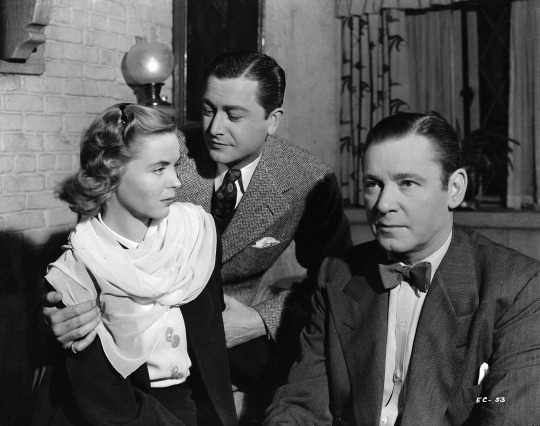
Released near the end of WWII, THE ENCHANTED COTTAGE (’45) thoughtfully presented a timeless tale of love and the true nature of beauty to a war-weary nation. But it also dives below the surface, imparting sensitive commentary on society’s standards of attractiveness and belonging, matters of which always seem to remain relevant even as the world changes.
In THE ENCHANTED COTTAGE, "homely" Laura (Dorothy McGuire) works as a housemaid at the cottage where handsome Oliver (Robert Young) and Beatrice (Hillary Brooke) plan to spend their honeymoon. However, WWII interrupts those nuptials, and a year later, Oliver gets discharged from service with visible battle scars. Bitter and almost driven to suicide, he shuts himself out from the world in that same cottage, where he befriends Laura and blind WWI veteran John (Herbert Marshall). Out of loneliness and convenience, Oliver and Laura marry, but something magical happens once they do: their physical imperfections melt away, but only to them, as love grants them the gift to see each other as they want to be seen.
Sir Arthur Wing Pinero penned the source material in 1922 in part to provide a confidence boost for injured WWI veterans. His play first hit the screen in 1924, and two decades later, WWII offered a timely background to update the story with similar effect; in fact, Variety predicted the picture would inspire tolerance and “make rehabilitation of the boys easier.” Almost a century after the story’s debut, The Enchanted Cottage’s themes continue to endure.

WWII expanded women’s roles, making it more acceptable for them to trade, to an extent, elegance for practicability and comfort, especially those who worked in factory jobs vacated by men. Even so, media and pinup photography highlighted beauty and desirability, confirming both genders “assigned great importance to female attractiveness,” as Susan M. Hartmann wrote in The Home Front and Beyond. Indeed, women’s magazines continually emphasized traditional femininity and glamour, while publications that men flipped through accentuated the same – and more overt sexual appeal, too.
As evidenced by her perceptive reaction to the shattering rebuffs she receives from servicemen at a dance, Laura does not fit the traditional modes of rouged-up style. Growing up in the internet age with similar pressures of glamour and perfect bodies everywhere I clicked, I identified with the humble and thoughtful Laura. Sure, society at large may not label her as physically attractive, but her appeal lies in the way she defends her worth and lives life on her own terms. The film presents her as more of a plain Jane, and viewers are privy to her compassionate character, which makes us root for her. That said, there has always existed a stark difference between the fantasy served up in media and women’s experience in the real world. Just like WWII opened up opportunities, modern women have access to a breadth of possibilities that have also altered how we live and look. Even though more diverse images of beauty are disseminated today, we still constantly consume meticulously crafted physical representations few can actually attain. The weight of 1940s societal pressures obviously left Laura with emotional scars, as such unreasonable demands still have the ability to do today.

Many soldiers returning from WWII also faced unrealistic expectations. As Mark D. Van Ells reported in To Hear Only Thunder Again, self-help books counseled veterans’ families to show patience, support and encouragement in difficult situations, which Oliver’s support system obviously didn’t do as he seeks to come to terms with his injuries. “Sensitivity seemed in short supply,” Thomas Childers remarked in Soldier from the War Returning when commenting on the stares and whispers disabled veterans regrettably encountered in public, which made many reluctant to venture out. That same social stigma and lack of empathy and kindness for one another, especially those who look different, sadly continue for too many today through bullying. In fact, internet anonymity seemingly gives people carte blanche to act much more cruelly online.
As Oliver despondently admits to John, he just wants his old life back. John W. Jeffries observed in Wartime America that post-war magazines and newspapers focused on getting back to normal, like going on trips and picnics. For disabled veterans, though, their new normal necessitated a completely different existence. Today, people feel similarly as we’ve lived with the COVID-19 pandemic for over a year. Many grapple with re-entering a society that looks unlike the one we left, and many more deal with tremendous loss and life-changing repercussions from the virus.
The outsider status imposed on Laura and Oliver draws them together in their own secluded world where they fit in. In the modern day, those who feel ostracized from society can find a sense of belonging with like-minded friends and companions around the world through online groups, social media and, of course, dating apps. Then as now, we just want to connect with others – and sometimes, as THE ENCHANTED COTTAGE reminds me, we have to look past the surface and embrace the true self that lies just beneath.
#The Enchanted Cottage#Robert Young#Dorothy McGuire#WWII#beauty#body image#disability#TCM#Turner Classic Movies#Old hollywood#Kim Luperi
80 notes
·
View notes
Text
Scoring a Silent Film By Susan King
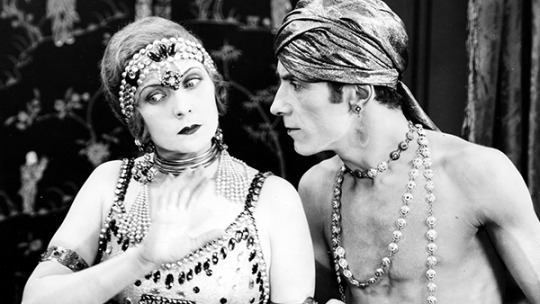
New York Times’ film critic Mordaunt Hall was beyond effusive in his review of Ernst Lubitsch’s 1926 comedy souffle SO THIS IS PARIS (’26) describing it as a “gay picture” which “hails from the workshop of that master director Ernst Lubitsch” and is doing its share to “uphold the screen art…’” He added that the “farce comedy is titivated with satire. It is a farcical yarn that keeps one amused from the start. The publication named the romantic roundelay starring Monte Blue, Patsy Ruth Miller, Lilyan Tashman and Andre Beranger, as one of the top ten films of the year.
Though several of Lubitsch’s silent Hollywood films have been released on DVD or aired on TCM, that hasn’t been the case with SO THIS IS PARIS, because the comedy didn’t have a score until now. The virtual TCM Classic Film Festival has the “Lubitsch Touch” Sunday evening with the world premiere of the new restoration of SO THIS IS PARIS, presented in a 2K scan off the Warner Bros. nitrate complete with a lively original organ score by and performed by Ben Model.
Over the years, TCM had licensed Model’s scores for silent films in the public domain he had initially done for home video including Baby Peggy’s THE FAMILY SECRET (‘24) and Marion Davies’ WHEN KNIGHTHOOD WAS IN FLOWER (‘22). One of the top accompanists and composers of silent film scores, Model had long wanted to work with TCM to commission new scores for their scoreless silent films in their library. After discussions with Charles Tabesh, TCM’s SVP for programming and content strategy, Model was able to score SO THIS IS PARIS.
“I knew SO THIS IS PARIS had been shown at the TCM Film Festival a few years prior,” said Model. “I knew this is a film that Warners’ controls. It’s a film I don’t have to convince anybody about… It’s already on everyone’s radar. I also knew that the Library of Congress had material on it.” And, it turned out TCM had scanned its print of the film. “They sent me a file and I scored the film.”

Surprisingly, Model doesn’t compose or play on an actual mighty Wurlitzer, he utilizes a virtual one using a computer program that “behaves like an actual organ console would.” Model watched the film once and took a lot of notes for himself: “story notes where I’m writing down what happens in the scene, what mood I think it would be. Sometimes I’ll write down this should be a minor waltz or something like that. I will also notate for myself in boldface visual cues. Not in a Mickey Mouse coconut sounds when somebody gets hit on the head kind of thing, but just so I can see it at a dramatic moment. “
There’s a scene in the beginning of the film where the one couple is rehearsing this Arabian dance and there is a man playing the piano. “We get a glimpse of the sheet music,” Model noted. “I thought just in case there are any musicians who are reading [the sheet music], I actually transcribed the first eight or nine ears of the ‘Dance of the Despair’ and it kind of works. “
He doesn’t write all the music out when he’s composing. “I improvise, although when I’m recording, it’s more like I improvise until it’s right. It’s a form of composition where I’m not physically writing notes on a piece of paper. But I still think of it as composition and not just making music until the scene is over. Improvisation was a technique that organists knew.”
He learned as a young man from the legendary silent film accompanist Lee Erwin that silent film music “should be interesting enough to hold you, but not pretty enough to distract you. The idea is because silent film is its own universe. I think the idea it to support the film and help the audience. Boost then up into the world and keep them in that world.” The biggest challenge scoring the film is the three minutes and 13 second Charleston party sequence “where nothing happens,” noted Model. “The film is forward motion and dramatic action then the movie stops. It’s just shots of a lot of people dancing. I didn’t just want to play until the scene was over. I wanted to try and map something out.”

So, Model watched the sequence, took down the timing and even created a spreadsheet “so I could figure out not only how many seconds each the segments are. I was able to break it down and discover the internal logical of the editing. I came up with a tempo which is a Charleston tempo or a tempo that the Charleston would be played it.” He chose not to include the famous Charleston music in the sequence because he thought it would be a distraction. “I chose to play music that was at the Charleston tempo so you could concentrate on what was being done on screen.”
#silent film#1920s#So this is Paris#Ernst Lubitsch#TCM#Turner Classic Movies#TCMFF#Ben Model#scoring#Susan King
64 notes
·
View notes
Text
Something New Has Been Added: Inside Tex Avery’s Madcap Animated Universe By Donald Liebenson
“The secret in animating is first to have an everlasting sense of humor, next to be able to see the commonplace in a funny way and most important of all, to be able to sketch your idea so that the other person will think it's funny."—Tex Avery, The Dallas Morning News, 1933
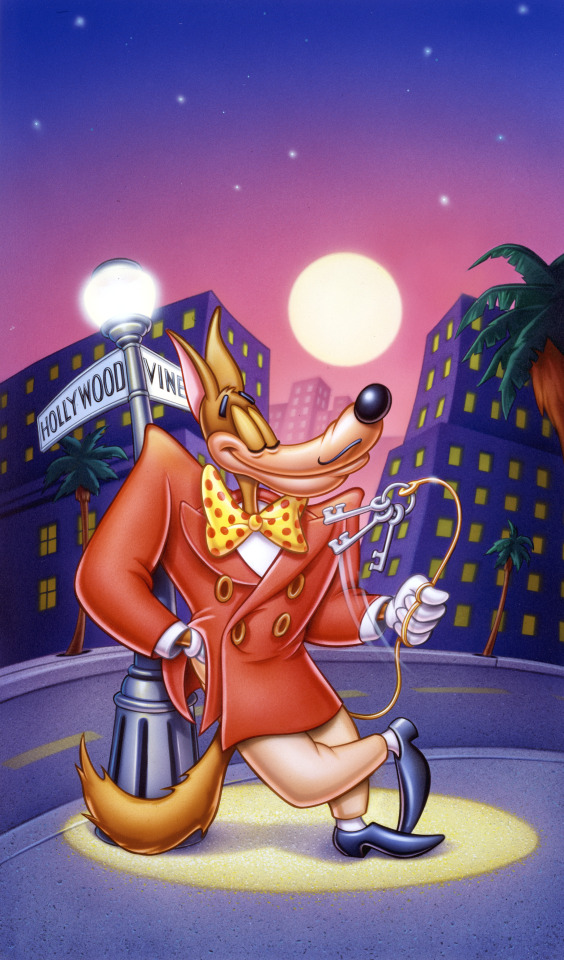
At the start of Fred “Tex” Avery’s RED HOT RIDING HOOD (‘43), the Wolf, Red Riding Hood and even Grandma rebel against a traditional rendering of the classic fairy tale and threaten to quit the cartoon right then and there. “Every cartoon studio in Hollywood has done it this way,” Red complains. “I’m pretty sick of it myself,” Grandma chimes in. And just like that, something new had been added, with a cat-calling, zoot-suit-bedecked Wolf cruising Hollywood Blvd.; Red Hot Riding Hood (aka that Sweetheart of Swing) knockin’ ‘em dead at a Hollywood night club; and a slang-slinging Grandma (“Hiya cousin, what’s buzzin?’”) waiting for a wolf of her own in her penthouse digs.
RED HOT RIDING HOOD kicks off TCM’s early morning tribute to Tex Avery, which will easily be the funniest thing you see all day. The cartoons will be preceded by John Needham’s British documentary TEX AVERY: KING OF CARTOONS (‘88). It is an ideal primer into the Avery-verse that charts his legendary career from high school cartoonist through his tenures with Walter Lantz Productions, Warner Bros. and MGM. Along with a generous sampling of clips from his Warner Bros. and MGM cartoons, there are priceless interviews with equally legendary colleagues such as Chuck Jones, Heck Allen and Mike Lah, along with June Foray, the Queen of Cartoons and Joe Adamson, who wrote the essential book, also titled Tex Avery: King of Cartoons. (Coincidence, isn’t it?)
Needham told TCM he was encouraged to make the documentary by Chuck Jones, whom Needham had profiled for the BBC arts series, Omnibus. “He simply said, ‘We should make a film about Tex,” he said. As an Avery fan himself, Needham was all in. “I think it’s his ability to take a gag to the extremes and then take it further and then take it even further,” he said. “Chuck said that he could never copy Tex because he didn’t have a clue what Tex was doing, he just knew that he was a genius. I’m sure I don’t know either, but what he did was incredibly funny.”

The seven cartoons included in the TCM tribute meet the “incredibly funny” standard. They were produced for MGM. These are not as well known or as widely seen as his cartoons for Warner Bros., where, most notably, Avery directed A WILD HARE (’40), the cartoon that established Bugs Bunny’s brash personality. Avery was an outlier at the tony studio that boasted “more stars than there are in the heavens.” MGM did make sparkling and sophisticated romantic comedies directed by the likes of George Cukor and Ernst Lubitsch, but MGM was where clowns went to die.
Buster Keaton wrote in his memoir that signing with MGM was “the worst mistake” of his career. THE CAMERMAN (’28) was an auspicious beginning, but gradually, Keaton lost the lion’s share of his creative control, suffered studio interference and was partnered with Jimmy Durante. The Marx Brothers’ association with the studio likewise began promisingly with A NIGHT AT THE OPERA (‘35), but soon the iconoclastic highs of the brothers’ Paramount films were but a dim memory and the brothers were relegated to playing second fiddle to insipid romantic leads like Kenny Baker and Florence Rice in AT THE CIRCUS (‘39).
But MGM could not tame Tex Avery. Or perhaps studio execs didn’t think animation was worth the time and trouble to meddle with, allowing him to work unimpeded. The best of the cartoons he made for the studio between 1942-55 put the “mad” in madcap, if that’s your idea of a good time. In his book, Adamson observes: “No artist, in any century, on any continent, in any medium, has ever succeeded in creating his own universe as thoroughly and overwhelmingly as Tex Avery.”
You might say that a Tex Avery cartoon is like that proverbial box of chocolates; you never know what you’re going to get. “Say, what kind of a cartoon is this gonna be, anyway?” asks the title character in SCREWBALL SQUIRREL (‘44), another of the Avery 7 to be featured in TCM’s mini-Avery-palooza. Well, it’s NOT going to be a charming Disney-esque romp with adorable forest creatures. Screwball Squirrel sees to that when he takes one of them behind a tree and violently disposes of him, assuring the audience, “The funny stuff will start as soon as the phone rings.”

BAD LUCK BLACKIE and KING-SIZE CANARY, two masterpieces that are highlights of TCM’s Avery cartoon block, break all rules of the physical world and nature. In the former, a black cat brings instant bad karma each time he crosses the path of a bullying bulldog. At one point, the unfortunate pooch must dodge a succession of falling objects that escalate from a sink to a battleship. In the latter, a chase between a cat, mouse and dog escalates to gigantic proportions thanks to a bottle of Jumbo Gro.
What critic James Agee wrote about the Marx Brothers also applies to Avery in that even lesser Tex is better worth seeing than most other things I can think of. SYMPHONY IN SLANG (’51) is a succession of silly sight gags inspired by a hipster’s arrival at the Pearly Gates. He tells his life story to a befuddled Noah Webster, who pictures literal translations to such phrases as, “I was born with a silver spoon in my mouth,” “It was raining cats and dogs” and “I died laughing.”
SCREWBALL SQUIRREL features some great self-referential gags, such as the title character peeking ahead to the next scene to figure out what to do next. But the character was so obnoxious that he was actually killed off at the end of his fifth, and final, cartoon.
Avery’s influence is vast. When in THE LITTLE MERMAID (‘89), Sebastian’s jaw drops like an anvil when he spies Ariel nursing an injured Prince Eric, that’s a classic Tex Avery take. THE MASK (‘94) pays direct homage to RED HOT RIDING HOOD when Jim Carrey’s Mask man is undone by nightclub chanteuse Cameron Diaz. And the Tex Avery force is strong in Animaniacs’ helter-skelter pacing and fourth-wall breaking.
But there is nothing like the real thing. No one made cartoons that were loonier. The secret? As Avery told Joe Adamson, he didn’t think in terms of the age of his audience: “I tried to do something I thought I would laugh at if I were to see it on the screen.”
#Tex Avery#cartoons#classic#Little Mermaid#Animaniacs#TCM#TCMFF#Turner Classic Movies#Donald Liebenson#TCM Classic Film Festival#animation
230 notes
·
View notes
Text
Judging BEYOND A REASONABLE DOUBT (’56) Today By Kim Luperi
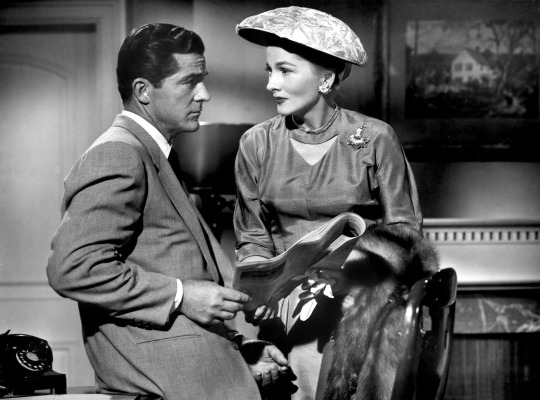
When I first saw Fritz Lang’s BEYOND A REASONABLE DOUBT (’56), I remember being engrossed by its calculated, improbable plot and twist ending. In re-visiting it recently, however, I found myself struck more so by some modern-day parallels I recognized in the story. While fundamentally a genre exercise that ultimately trivializes the hot button topic it broaches, the film nonetheless raises issues regarding media and criminal justice that continue to resonate.
In BEYOND A REASONABLE DOUBT, novelist Tom (Dana Andrews) joins forces with his future father-in-law, newspaper publisher Austin (Sidney Blackmer), for an experiment: to prove the fallibility of circumstantial evidence by exposing how an innocent man could be sentenced to death. To do so, they frame Tom for a murder they’ll later prove he didn’t commit. Tom’s fiancée Susan (Joan Fontaine) isn’t in on the scheme; only Austin knows the truth. Sure enough, their carefully laid plan results in the death penalty for Tom, but when Austin dies in a freak accident, destroying the exonerating evidence with him, Tom has to scramble to prove his innocence. The film ends with a twist that I’ll discuss in a moment, so if you dislike spoilers, I suggest you stop reading, watch it and come back!
Heavy on plot and light on character, the film spends most of its 80 minutes mounting Tom as the fall guy. He and Austin deposit pieces of evidence, such as Tom’s personalized cigarette lighter at the murder scene, and photograph each action to corroborate their story. The methodical way they record their every move is analogous to the modern-day practice of digitally capturing evidence to substantiate controversial events. As we’d say today, Tom and Austin were ready to bring the receipts – until the inadvertent destruction of their tangible proof almost derails their experiment.
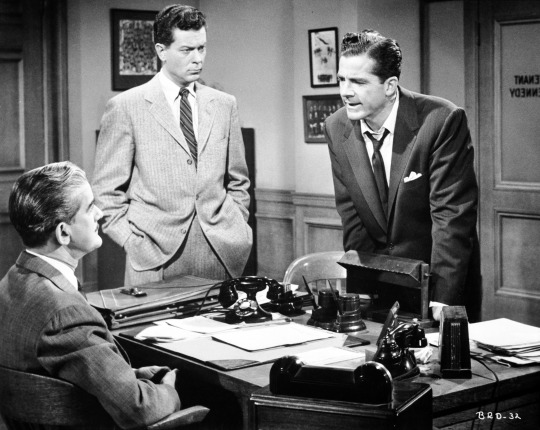
Austin is a fierce advocate against capital punishment, yet he doesn’t want his paper showing bias. Following his death, though, Susan pressures her father’s associates to “use the newspaper in every way you can” to swing support in Tom’s favor. Many present-day news outlets are charged with similar partiality. When it comes to high-profile trials today, clips and photos, especially those shared on social media (the new court of public opinion), play a huge role in the accused’s perceived innocence or guilt.
Near the end of BEYOND A REASONABLE DOUBT, evidence finally verifies Tom and Austin’s story. With a pardon within his reach, Tom unwittingly mentions the victim’s real name to Susan, proving he knew her and actually did it, ingeniously taking advantage of Austin’s offer so he could off an estranged wife. Susan turns him in, and we are to assume he will be executed as the film fades to black.
So, what does this say about the experiment? In a way, it could prove Austin’s point, because Tom’s sentence resulted solely from evidence he and Austin planted. We’re to believe that any actual innocent man could have participated in Austin’s ploy and received the same condemnation. Though the guilty party ultimately pays for his crime, the system shouldn’t get credit. In fact, an exhaustive investigation found nothing to link Tom with the victim – if it weren’t for him indicting himself, he’d get off. How’s that for justice?
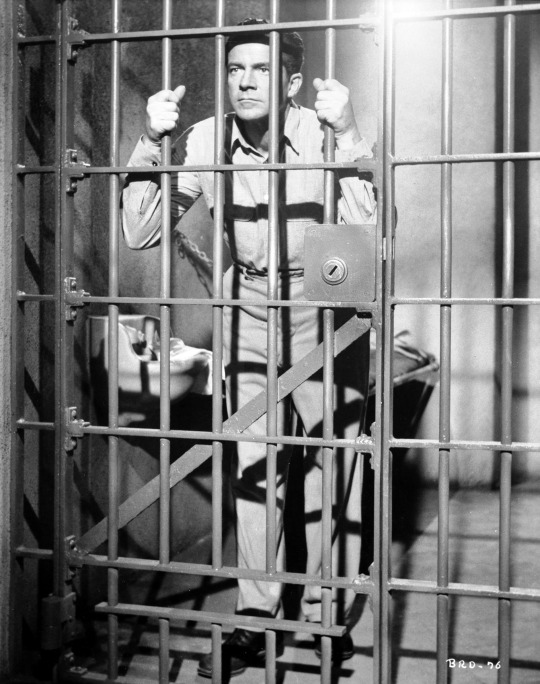
“My argument against capital punishment is that the law forces some other man to commit murder,” Fritz Lang remarked in a 1969 interview. From the start, Lang disagreed with the script’s convoluted direction and the fact that the audience roots for Tom the whole time, only to reveal – out of nowhere – that he’s despicable at the end. Lang butted heads with producer Bert E. Friedlob, especially over the opening execution scene, which Friedlob wanted to make convincing. Lang agreed that a realistic portrayal was a powerful argument against capital punishment, but he did too good a job; when Friedlob saw the result, he denied his initial directive and rebuked Lang for being so cruel. So contentious was their partnership that the director coldly recalled shooting the movie “under duress” and left Hollywood for good after he helmed his final scene.
The topic of capital punishment has long been contended. Writer Douglas Morrow, who held a master’s degree in law, penned the film’s original story after reading a 1955 Gallup poll that revealed an even divide on the death penalty among Americans. That division may well have stemmed from protests in the 1950s and 1960s, which led to a decline in executions. In the movie, Austin remarks that six states did not have the death penalty in 1956; today, it’s illegal in 23 states.
That progress aside, Austin’s fear that the system could mistakenly put an innocent man to death is genuine. Since 1972, at least 185 death row prisoners have been wrongly convicted and set free, per DealthPenaltyInfo.org. Even more tragically, it’s been concluded that some executed inmates were most likely innocent. While the death penalty may be utilized less today, it’s as clear as it was then that miscarriages of justice persist, something BEYOND A REASONABLE DOUBT chillingly reminds me of, even if the film is less a statement on capital punishment than Lang perhaps wanted.
#Dana Andrews#criminal justice#courtroom#legal#drama#TCM#Turner Classic Movies#Fritz Lang#kim luperi
60 notes
·
View notes
Text
Desire in Three Parts: Satyajit Ray’s THREE DAUGHTERS By Bedatri D. Choudhury
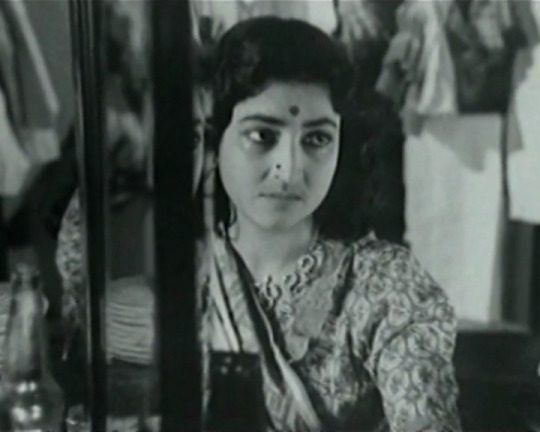
Satyajit Ray made Teen Kanya (THREE DAUGHTERS, ‘61) to commemorate the birth centenary of the Bengali cultural giant—poet, writer, playwright, composer, philosopher, social reformer, actor, educationist, painter—Rabindranath Tagore. It is noteworthy that Ray, a polymath himself, decided to concentrate on the three female protagonists of Tagore’s short stories from the volumes of poems, novels, short stories, dramas, essays and songs that Tagore left behind. May 2, 2021 marks Ray’s birth centenary and studying the expansive creative careers of both men often reveals several points of intersection.
Tagore’s women, like Ray’s, are complex—independent yet bound by tradition; inhabiting, as women do, the in-betweenness within a desire for boundless personal freedom and the socio-familial space that denies it to them. Teen Kanya is an anthology of three films: Postmaster with the young, orphaned protagonist Ratan (Chandana Banerjee); Monihara with the childless wife of a rich jute plantation owner Manimalika (Kanika Majumdar); and Samapti with the shrew-like “wild child” teenager Mrinmoyee (Aparna Sen). Incidentally, it is with Teen Kanya that Ray, too, found a seamlessness within his own creative pursuits, as he began to score music for his films.
Tagore’s “Postmaster”, written in 1891, tells the story of Ratan who works for her village’s Postmaster, the Anglophile Nandal from Calcutta (Anil Chatterjee). With Nandal’s arrival, Ratan, receives affection for the first time in her life. She learns how to read and write from him, makes him his meals and then takes care of him while he fights a bout of malaria. When, unable to tolerate village life anymore, Nandal hands in his resignation and Ratan’s world is robbed of the love she had begun to acclimatise to. While Tagore’s Ratan falls to the Postmaster’s feet, begging him not to leave her alone, Ray’s Ratan walks past Nandal and goes on attending to her household chores. Nandal breaks into tears as the potholed road ahead leads to his future back in the city; Ratan quietly lives out her destiny.
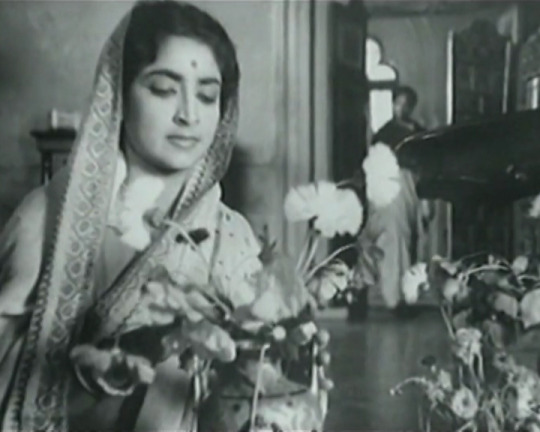
“Ray did not deny his women the right of choice. His women had agency. They were primary protagonists in their own right,” writes actor Sharmila Tagore who was 15 when she made her debut in Ray’s Apur Sansar (THE WORLD OF APU, 1959). Her words do not just ring true for Ratan but also for Manimalika and Mrinmoyee. The three women form the moral arc of the film, making the audience not just question the society but also the ways in which they, personally, inhibit women’s personal freedoms and ambitions.
Even within a horror story like Monihara, where the protagonist lives with a cavernous greed for gold and is probably unfaithful to her husband, Ray (and Tagore) divulge the psychology behind her greed. Manimalika feels judged by her in-laws because she hasn’t been able to bear her husband a child. As Sharmila Tagore says “Ray gifted his women protagonists the liberty which defied the cliché that the male desire is visual while the woman’s is sensory.” This obvious visual female desire, as heightened as it is in the protagonists’ sexual transgression in Charulata (THE LONELY WIFE, ‘64) and Ghare Baire (THE HOME AND THE WORLD, ‘84), finds a materialist incarnation in Manimalika’s unapologetic gold lust. When you reduce a woman to her womb, why should she find it in herself to be a holistic human being and not just a dehumanized, ever-widening lacunae of greed?
Her disappearance from her husband’s life does not leave behind a vacuum that he can fill with another wife who can perhaps bear him an heir. Instead, she haunts him, filling his existence with a hopeless wait and an obvious dread. It is not just a haunting of her husband’s life, but that of his ancestral home, the seat of long-standing patriarchy that perpetuates itself from one heir to another.

Aparna Sen, at 16, made her debut as Samapti’s Mrinmoyee, a bright-eyed, rebellious village teenager who wouldn’t toe the line of patriarchy and the way it expects “marriage worthy” young women to behave. When Amal (Soumitra Chatterjee) marries Mrinmoyee, only with the consent of her parents, she lashes out, refusing to bow down to a life of servile conjugality. Not only does she have a mind of her own, but she also insists upon sovereignty over her body, which is only its most authentic self when running through fields and sitting on swings. She runs away from her husband on the night of their wedding and spends it outdoors, sleeping on her beloved swing.
These women, and Ray’s later women like Charulata and Arati (MAHANAGAR, THE BIG CITY, ‘63), are well-versed in articulating a language of complex desire and longing through their bodies, even when they don't have the verbal vocabulary for it. There is an insistence (in both Tagore and Ray’s works) of intellectual, economic and physical sovereignty by these women that, as pointed out by Sharmila Tagore, often predates the establishment of a formal women’s movement in India. They are the conscience of the texts they occupy, and this conscience is not a vague, moral or a spiritual one. Both Ray and Tagore embody this conscience within a female body that transgresses, fights and yet, always, desires.
#Satyajit Ray#Three Daughters#Indian Cinema#indian representation#women in film#centennial#TCM#Turner Classic Movies#Bedatri D. Choudhury#film#foreign film
73 notes
·
View notes
Text
Martha! Martha! Martha!! THE STRANGE LOVE OF MARTHA IVERS (’46) By Theresa Brown
“It would have been so different if you hadn’t run away. It would have been you instead of Walter. Or if you had stopped me. When I lifted the cane, why didn’t you stop me? You know how much I hated her. Why didn’t you stop me?”
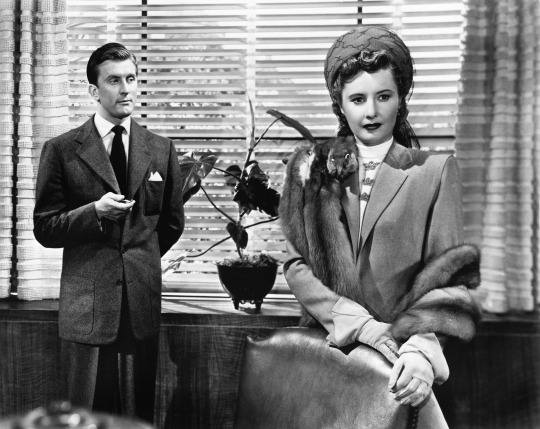
In April, TCM celebrates all things Oscar with their 31 DAYS OF OSCAR programming, and it frankly boggles my mind how Barbara Stanwyck never won a competitive Academy Award. She received nominations for STELLA DALLAS (‘37), BALL OF FIRE (‘41), DOUBLE INDEMNITY (‘44) and SORRY, WRONG NUMBER (‘48). She was such a good, solid actress. Starting off as a Broadway chorus girl, Stanwyck had been honing her craft in film since 1929. Never really the sweet, ingenue, girl-next-door type, there was often an edge and feistiness to even her most sympathetic characters. The bulk of the 1930s saw her in dramas, but THE MAD MISS MANTON (‘38) unlocked the screwball door.
It turns out Stanwyck could do comedy and drama (no easy feat being a double threat) and sling a line with the best of ’em. On second thought, perhaps she is a triple threat because she could do Westerns (I never saw Bette Davis gallop on a horse and no, rear screen projections don’t count). Or maybe even a quadruple threat because she could dance: (did you see her do that split in LADY OF BURLESQUE, ‘43)? In the 40’s, Stanwyck jumped another hurdle as she crossed the threshold into stone-cold, lethal ladyhood with DOUBLE INDEMNITY.
It’s often too easy to say someone is a good girl or bad guy. As soon as you ask WHY one does what one does...you realize folks are a little more complex than either or. That’s where I put Stanwyck as she delves into the dark side with THE STRANGE LOVE OF MARTHA IVERS. I must have seen this movie, conservatively speaking, at least 11,329,853 times since the 1960s. It’s one of my top five favorite films. Stanwyck is great in this. I see her Martha Ivers as a woman trapped. The entire cast is terrific. Everyone fulfills the trope of characters we’ve become familiar with in the world of film noir. Along with Stanwyck, the film stars Van Heflin, Lizabeth Scott and in his first screen appearance, Kirk Douglas as Stanwyck’s husband, Walter O’Neil.
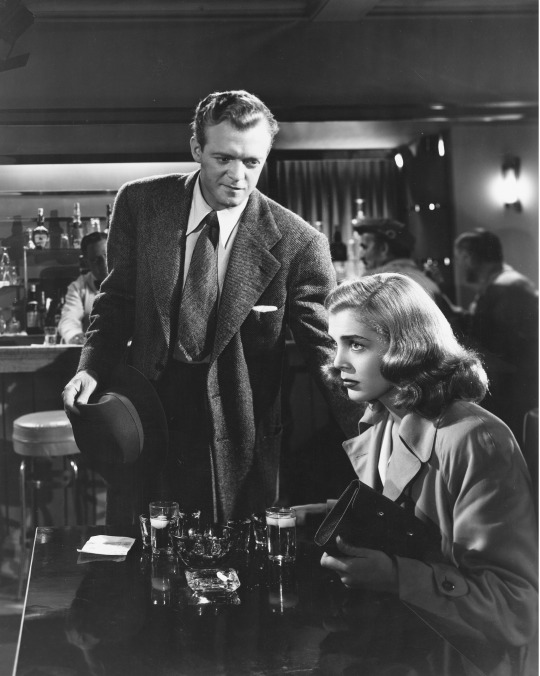
Scott’s character here is a girl more on the good side than bad side of noir, and who’s been hurt by men...victimized. Oh, we see she knows she appeals to men, and they want to give her things. But then she’s often left holding the bag. In MARTHA IVERS she’s on parole and will be used by the law to corner Heflin. But before she betrays him, they’ve got a nice budding relationship going. She’s a little wary and can take care of herself, but ultimately she’s a lost, hurt pup. Composer Miklós Rózsa underscores her vulnerability with sweet romantic violins. She has no hidden agenda and just wants a ride out of town in the opposite direction the law wants to send her. She falls for Heflin. This time she might’ve picked right: a man who wants nothing from her. But before they go forward, he must go back.
It took me 40 years of watching this movie to really fall for Van Heflin and now...I’m hooked. I really like him in this film. Heflin plays Sam Masterson, the usual protagonist you see in film noir: the flippant, wise-ass, smart aleck: “The road turned and I didn’t.” He roams from thing to thing...wears the requisite fedora. Sam is easy, breezy. And he stumbles into his past. While Walter might not bruise an olive, Sam doesn’t back away from a fight. Sam shows us a glimpse of hurt when he talks about his “people” who abandoned him. He’s sensitive to the hard-luck girl he picks up along the way without taking advantage of her. He’s also an opportunist. He figures out that from asking D.A. Walter for a favor, it might land him in the chips if he plays his cards right.
As an actor, Heflin faces the big kahuna in this movie: Stanwyck. This is their first pairing but it wouldn’t be their last. They co-star in EAST SIDE, WEST SIDE (‘48) and B.F.’s DAUGHTER (‘49). They’re both so accomplished opposite each other. Stanwyck has had some dashing leading men in her career, but for my money...very, very few of them can hold a candle with her like Van Heflin.
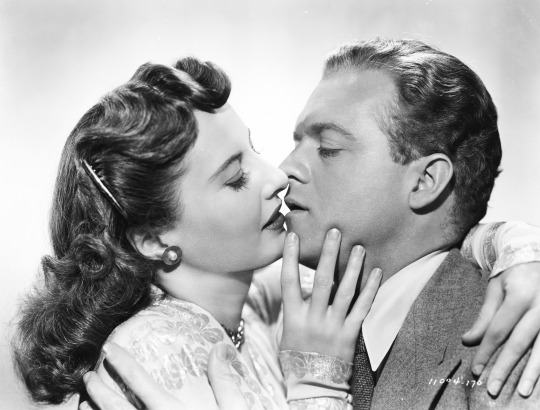
The Oscars likes Acting ( with a capital "A" ). I’ll begrudgingly admit, Stanwyck’s four Oscar-nominations come from showier performances. In them, she’s a terrorized, self-sacrificing, pistol of a showgirl with a cheap blonde wig living with some squirrely professors and wants her lover to murder her husband. She’s not showy in MARTHA IVERS though she does run a gamut of emotions and attitudes on her journey, and nothing beats Stanwyck when she has to desperately plead. Whether she’s steely, contemptuous, dismissive, sarcastic, desperate, desirous, loving or volcanic, Barbara Stanwyck has many gears she can expertly shift into. And any one of them should garner her an Oscar.
THE STRANGE LOVE OF MARTHA IVERS is one of the best films noir. Riveting in how it unspools events, it’s all a noir should be, even without the flashback and narration. And please keep your eye out for Ann Doran’s five-minute bit as a secretary. She’s a dream. Simply a dream. They say you can’t go home again. It’s especially true in film noir. Well, time to watch the movie once more. Coming up on my 11,329,854th time.
#Barbara Stanwyck#Van Heflin#Lizabeth Scott#film noir#Oscars#Academy Awards#TCM#Turner Classic Movies#Theresa Brown
108 notes
·
View notes
Text
Big Noise from Canada: Douglas Shearer By Jessica Pickens
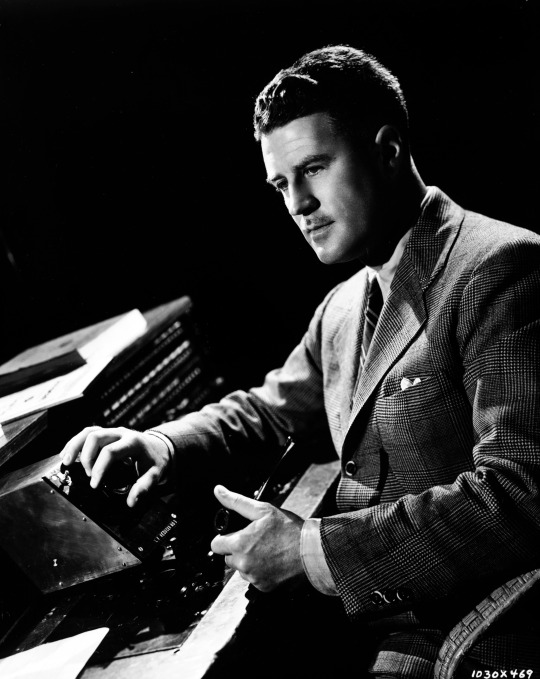
His name in the credits is as synonymous with Metro-Goldwyn-Mayer as hearing Leo the Lion roar before a film. Douglas Shearer was MGM’s head sound designer and recording director. By some, Douglas Shearer could simply be reduced to the brother of actress Norma Shearer. He moved to Los Angeles from Canada to join his mother and two sisters (after not seeing them for four years). Norma became not only one of MGM’s movie queens but one of the biggest global stars of the 1930s.
The transition from silent to talking pictures was an uncertain time in Hollywood. Shearer, an engineer by trade, muscled his way in and with his significant inventions, transformed talking pictures and filmmaking. “During his more than 40 years with MGM, he contributed more than any other man in Hollywood to the perfection of motion picture sound,” said writer and filmmaker, Ephraim Katz. But Douglas paved his own way and was conscious of the implications of nepotism. He went so far as living by himself away from his family, making a point that he was not connected to Norma. He didn’t need Norma’s star power, though it probably didn’t hurt in making initial connections.
Shearer’s first job in Hollywood was in the prop room, where he called himself “assistant animal guy,” as he wrangled several pigeons, cows, chickens and pigs, according to film historian Gavin Lambert. While working with the livestock, it was the discussion of sound that peaked Shearer’s interest. He pitched an experiment to MGM of adding sound to a film trailer, and in turn, was given a job in special effects at MGM. “I had enough background in industrial plants and mechanicals so that I thought the competition wouldn’t be too tough,” Lambert quotes Shearer.
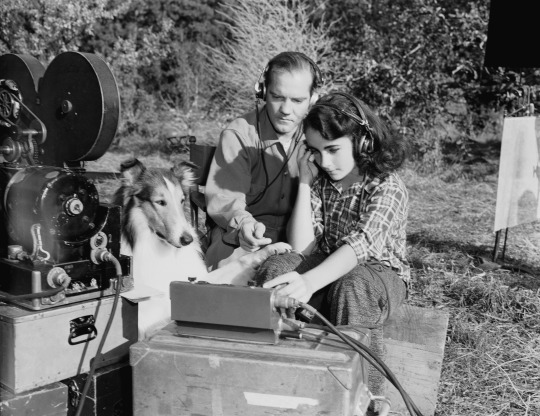
By 1928, Shearer was the head of MGM’s sound department — a position he held for 40 years. “Overnight, I was the one-man sound department,” Lambert quotes Shearer. MGM was the last major studio to make the conversion to sound, and they relied heavily on Shearer. He visited Bell Laboratories in New Jersey to study the latest equipment and hired a team.
With “more stars than there are in heaven,” MGM’s look was important, but so was its sound. “Douglas gave it a clarity and spaciousness unequalled at the time,” Lambert wrote. But Shearer didn’t just learn how to produce sound in the early days, he had to eliminate extraneous sounds. The cameras of the late-1920s were loud, so his team developed a quieter camera. He also faced issues of microphone placement, which was solved by creating a moving microphone on the boom to move with the actors, according to film historian Charles Foster.
Shearer created other innovations that became industry standards and landmarks, such as:
The first lion’s roar that was heard behind the MGM logo.
Shearer suggested synchronized singing with already recorded music for THE BROADWAY MELODY (’29), which became standard procedure with the playback system.
He electronically created Tarzan’s famous yell.
Shearer was able to “retouch” singing. For example, he would adjust the soundtrack frame by frame if a singer like Jeanette MacDonald went flat in the high-note range.

With a total of 14 Academy Awards, Shearer was awarded seven competitive awards from 1930 to 1958, ranging from Best Sound, Recording to Best Special Effect and seven others for technical and scientific achievements. He received the award for Best Sound the first year it was introduced for the film THE BIG HOUSE (’30).
Always innovative, Shearer’s projects took him outside of sound as well. He developed an improved system of color process photography. He also worked on the 65mm big screen look for BEN-HUR (’59).
During World War II, he took a hiatus from films to help the government. Shearer helped with the research and development of radar and devices that determine when and where nuclear explosions take place, according to his New York Times 1971 obituary. When President Roosevelt offered Shearer a civilian award for his work, this was one accolade he declined. “I didn’t do it for the personal glory,” Shearer told Roosevelt. “I did it to help save lives and get the war over and done with.”
Though Shearer is considered by many one of the most influential figures of Hollywood history, it’s those in front of the camera, like his sister Norma, that are better remembered today. In a 1963 interview, actor Spencer Tracy noted that Shearer was the only person he knew to have a plethora of Academy Awards and to never be seen on screen. “He has made many stars by his achievements … I wonder where I would have been today if it wasn’t for the genius of this man,” Tracy said. “He is a star himself, but he will never admit it.”
#Douglas Shearer#norma shearer#sounddesign#sound recording#sound#talkies#history#TCM#Turner Classic Movies#Jessica Pickens
77 notes
·
View notes
Text
Oscars of the Past: A Look at Discontinued Categories By Raquel Stecher
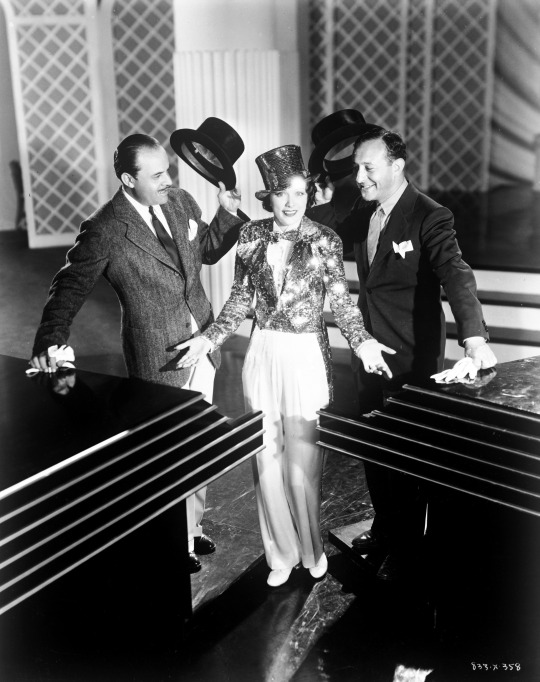
The Academy Awards have evolved greatly since that first ceremony was held on May 16th, 1929 in the Blossom Ballroom of the Hollywood Roosevelt Hotel. To quote the late, great Robert Osborne, who himself was the foremost expert on Oscar history, the early days were “a time of great changes everywhere, a dynamic period of transition.” And after the first decade, “the Academy Awards and the Academy itself had become prestigious parts of the film community.” Much of that first decade and beyond saw the Board of Governors and the Academy experimenting with new and shifting categories, establishing a variety of honorary awards and altering the selection process.
There was a time when winners were announced months before the actual ceremonies without nominees, just a sole winner and honorable mentions and when write-in nominations were allowed and the Board of Governors hand-selected winners without input from the Academy. The awards have changed over time and the process has been fine-tuned. While some categories have lasted to this day, many have been discontinued, relegated to the history books as anomalies of Oscar’s past. Let’s take a look at some of the most notable discontinued categories.
BEST UNIQUE AND ARTISTIC PICTURE:
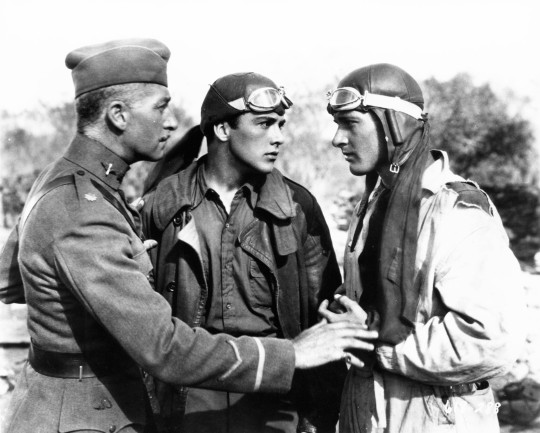
There were 12 award categories presented at the very first Academy Awards ceremony. A few of these were one-shot deals never to appear again. Best Picture, as it is known today, was split into two categories: Outstanding Picture and Unique and Artistic Picture. While WINGS (’27) is generally considered to be the first Best Picture winner, SUNRISE (’27) won Best Unique and Artistic Picture, a recognition no other film has earned since.
BEST DIRECTING, COMEDY PICTURE & DRAMATIC PICTURE:
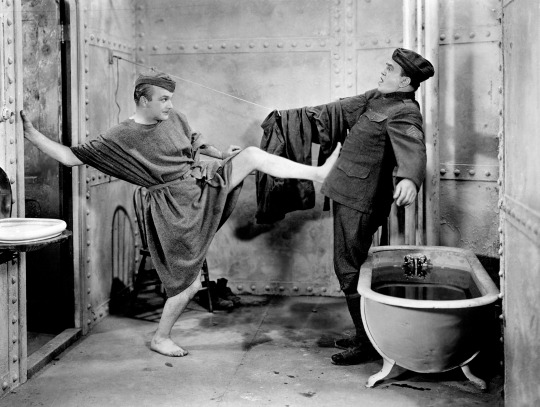
That same year, the Best Director category was split into two: Comedy Picture and Dramatic Picture. There were no nominees, just one winner and one or two honorees. Frank Borzage won the only Best Directing, Dramatic Picture Oscar for 7TH HEAVEN (’27) and Lewis Milestone won Best Directing, Comedy Picture for TWO ARABIAN KNIGHTS (’27). Charlie Chaplin was to be nominated for directing THE CIRCUS (’28), but according to Robert Osborne, the Academy decided to give him a special award instead in recognition for directing, writing, producing and acting in the film. The Academy Board of Judges, as it was known at the time, sang Chaplin’s praises and in a letter wrote to him saying, “the collective accomplishments thus displayed place you in a class by yourself.”
BEST ENGINEERING EFFECTS:
Special effects artist Roy Pomeroy won the first and only Academy Award for Best Engineering Effects for his work on WINGS (’27). Ralph Hammeras and Nugent Slaughter, the latter of whom was being recognized for his work on THE JAZZ SINGER (’27), received honorable mentions. This award disappeared until 1938 when it was given new life as the Best Special Effects Oscar. It split into two sub-categories: Photographic and Sound. In the mid-1940s, it was changed again to Visual and Audible. By 1963, the Academy decided to present the awards as Best Visual Effects and Best Sound Editing. While Visual Effects is still an active category, Best Sound Editing was merged with Best Sound Mixing to become simply Best Sound.
JUVENILE OSCAR:
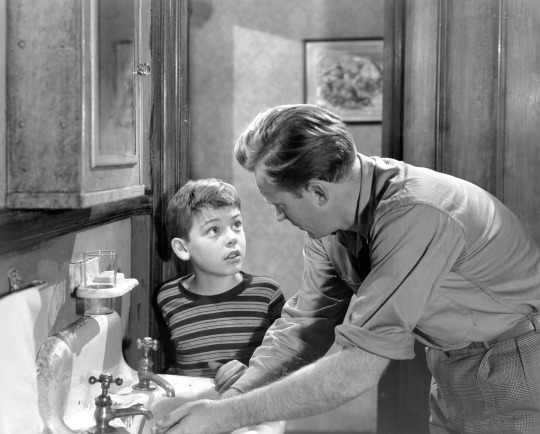
From 1935 to 1961, the Academy presented miniature Oscar statuettes to juvenile actors in recognition for their outstanding contributions to film. There were 12 total recipients at 10 different award ceremonies. The first was Shirley Temple who at 6 years old was presented the statuette by Irvin S. Cobb. He declared “When Santa Claus brought you down Creation’s chimney, he brought the loveliest Christmas present that has ever been given to the world.” Other recipients included Deanna Durbin, Mickey Rooney, Judy Garland, Margaret O’Brien, Peggy Ann Garner, Claude Jarman Jr., Bobby Driscoll and others. Both Garland and O’Brien’s Juvenile Oscars were stolen and the Academy replaced them with new statuettes. There were only 14 miniature statuettes ever made, making this one of the rarest Oscars in history not only because of its size but how few were made. The award wasn’t presented every year and was fairly inconsistent. The last to win was POLLYANNA (’60) star Hayley Mills. Shirley Temple presented the final award and Annette Funicello accepted it on Mills’ behalf. The award was retired and actors under the age of 18 were eventually recognized in the other acting categories.
BEST ASSISTANT DIRECTOR:
This is by far the strangest and least consistent of the discontinued categories. At the 6th Academy Awards in 1934, a whopping 18 assistant directors were nominated for this new category. Out of the 18 nominees, there were 7 winners each representing one of the major studios. The nominations were not tied to a specific movie, but rather served as recognition for work completed in 1932 and 1933. The first winners included: Charles Barton (Paramount), Scott Beal (Universal), Charles Dorian (MGM), Fred Fox (United Artists), Gordon Hollingshead (Warner Bros.), Dewey Starkey (RKO) and William Tummel (Fox). The category was presented at the next four Academy Awards but with only a few nominees and just one winner. After 1938, the Academy retired the category, choosing to focus on Best Director.
BEST DANCE DIRECTION:
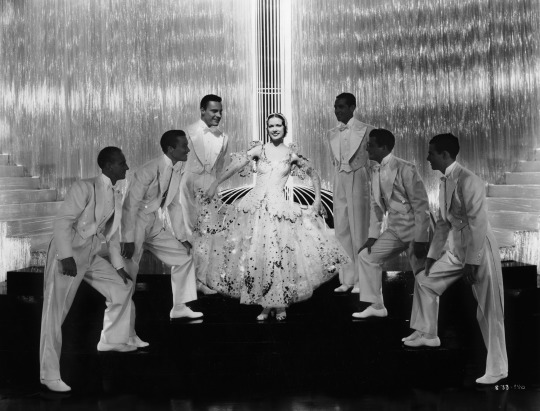
Choreographers enjoyed some recognition during the hey-day of 1930s musical with the Best Dance Direction Oscar. This category was presented from 1936 to 1938. At the 8th Academy Awards, seven choreographers were nominated, each for two different musical numbers, not necessarily in the same film. Dave Gould won for his dance numbers in BROADWAY MELODY OF 1936 (’35) and FOLIES BERGERES DE PARIS (’35). The following two years, seven choreographers were nominated, each for just one dance number. This category was short-lived and did not make a comeback in 1939.
#Oscars#academy awards#2021#1929#AMPAS#old hollywood#classic movies#TCM#Turner Classic Movies#Raquel Stecher
143 notes
·
View notes
Text
Child’s Play: The Juvenile Academy Award By Jessica Pickens

It can feel a little awkward when a child is told they did a better job at work than an adult. That was the case with the Academy Awards at least. At 9 years old, Jackie Cooper was the first child nominated for a Best Actor at the 4th Annual Academy Awards. Nominated for SKIPPY (’31), Cooper was competing against Richard Dix, Fredric March, Adolphe Menjou and Lionel Barrymore. It was Barrymore who took home the award that night for his performance in A FREE SOUL (‘31).
Three years later, 6-year-old Shirley Temple looked like a serious contender for a Best Actress nomination at the 7th Academy Awards. This same year, there was heartburn that Bette Davis hadn’t received an official nomination for OF HUMAN BONDAGE (’34). As a compromise, Temple’s autobiography notes that a special Juvenile Academy Award was created, “In grateful recognition of her outstanding contribution to screen entertainment during the year 1934.” Claudette Colbert took home the Best Actress award that year for IT HAPPENED ONE NIGHT.
The juvenile statue awarded to the young actors was half the size of the regular Academy Award; standing about seven inches tall. Temple was the first to receive an award that was presented 10 times to 12 honorees over the next 26 years. The juveniles ranged in ages 6 to 18.
Shirley Temple, 1934 at the 7th Annual Academy Awards
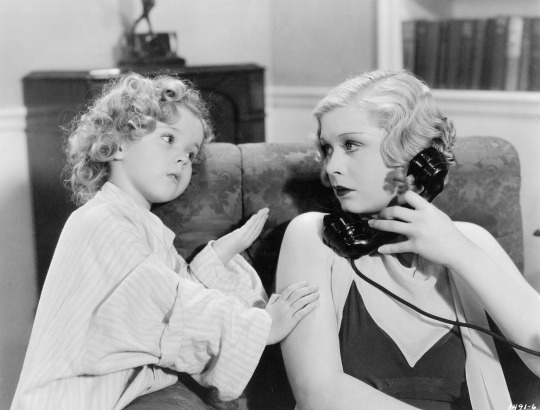
As Temple sat bored at the Academy Awards, she was surprised to hear her name announced during the ceremony. Host and humorist Irvin S. Cobb called her “one giant among the troupers.” As she grabbed her miniature-sized award, she asked, “Mommy may we go home now?” according to her autobiography. “You all aren’t old enough to know what all this is about,” Cobb told Temple. Shirley’s mother told her that she received the award for “quantity, not quality,” because Temple starred in seven films in 1934.
In 1985, Temple received a full-sized award, as she felt the juvenile actors deserved a regulation-sized award like everyone else, according to Claude Jarman, Jr.’s autobiography.
Mickey Rooney and Deanna Durbin, 1938 at the 11th Annual Academy Awards:
The second time the special award was presented was to two juvenile actors: Mickey Rooney, 18, and Deanna Durbin, 17. They received the award for “their significant contribution in bringing to the screen the spirit and personification of youth and as juvenile players setting a high standard of ability and achievement.”
“Whatever that meant,” Rooney commented in his autobiography on the award.
This was Durbin’s only recognition from the Academy. The following year, Rooney received his first adult nomination for BABES IN ARMS (’39). In total, he received four other competitive awards as an adult, and received one Honorary Award in 1983 in recognition of “50 years of versatility in a variety of memorable film performances.”
Judy Garland, 1939 at the 12th Annual Academy Awards:
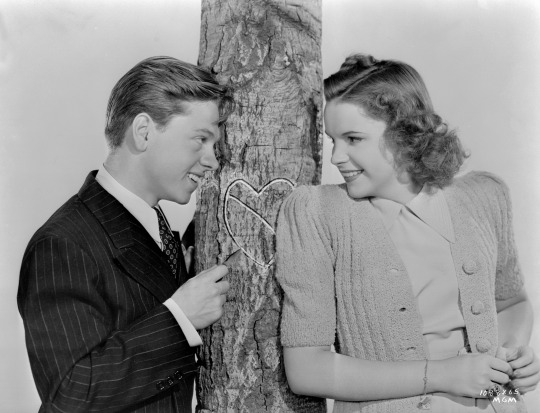
Judy Garland, 17, was presented her Juvenile Academy Award by her frequent co-star Mickey Rooney. Garland received her award for “her outstanding performance as a screen juvenile during the past year” for her performances in BABES IN ARMS (’39) and THE WIZARD OF OZ (’39). Garland wouldn’t be recognized with a nomination by the Academy again until her 1954 performance in A STAR IS BORN. Garland reported losing the Juvenile Award in 1958, and it was replaced by the Academy at her own expense.
Margaret O’Brien, 1944 at the 17th Annual Academy Awards
Margaret O’Brien, 7, received the Juvenile Academy Award “for outstanding child actress of 1944” for the film MEET ME IN ST. LOUIS (’44). When Margaret O’Brien received her Oscar, she said she wasn’t really that interested in it at the time. “I was more excited about seeing Bob Hope. I was more interested in meeting him than the Oscar that night,” she said, quoted by her biographer.
In 1958, O’Brien’s award was lost. Her housekeeper, Gladys, took the Juvenile Academy Award home to polish and didn’t return. A short time after, Gladys was put in the hospital for a heart condition and the award was forgotten. When Margaret reached out later about the award, the maid had moved, according to her biographer.
Nearly 40 years later, two baseball memorabilia collectors — Steve Meimand and Mark Nash— returned the award to O’Brien in 1995. The men had bought it at a swap meet in Pasadena, according to a Feb. 9, 1995, news brief in the Lodi New-Sentinel. “I never thought it would be returned,” she said in 1995. “I had looked for it for so many years in the same type of places where it was found.” In 2001, O’Brien donated her Oscar to the Sacramento AIDS Foundation.
Peggy Ann Garner, 1945 at the 18th Annual Academy Awards

After appearing in films since 1938, Peggy Ann Garner’s breakout role was in the film adaptation of A TREE GROWS IN BROOKLYN (’45). That year at the Academy Awards, 14-year-old Garner was recognized with the Juvenile Award “for the outstanding child actress of 1945.” It was an unexpected honor for Garner, who was confused why she was asked to sit in an aisle seat. She thought it was a mistake when her name was announced, according to Dickie Moore’s book on child actors.
Claude Jarman Jr., 1946 at the 19th Annual Academy Awards
Claude Jarman Jr. was plucked from his home in Knoxville, Tenn. and thrust into stardom when director Clarence Brown selected him for the lead role in THE YEARLING (’46). Jarman wrote in his autobiography that he gave a brief speech saying it was a thrilling moment and “This is about the most exciting thing that can happen to anybody.” However, later admitted that at age 12 the significance of the award escaped him. Following Shirley Temple’s example, Jarman also later received a full-sized Academy Award.
Ivan Jandl, 1948 at the 21st Annual Academy Awards

Ivan Jandl received the Juvenile Academy Award in his only American film, making him the first Czech actor to receive an Academy Award. At age 12, Jandl was recognized for his “outstanding juvenile performance of 1948 in THE SEARCH (’48).” The film was one of only five films Jandl starred in. Jandl was not permitted by the Czechoslovakia government to travel to the United States to accept his award, which was accepted on his behalf by Fred Zinnemann, who directed THE SEARCH.
Bobby Driscoll, 1949 at the 22nd Annual Academy Awards
Bobby Driscoll received the award for “the outstanding juvenile actor of 1949” after appearing in the film-noir THE WINDOW (’49), as well as his performance in the Disney film SO DEAR TO MY HEART (’48). “I’ve never been so thrilled in my life,” 13-year-old Driscoll said when he accepted the award.
Jon Whiteley and Vincent Winter, 1954 at the 27th Annual Academy Awards
Scottish actors Jon Whiteley, 10, and Vincent Winter, 7, co-starred as brothers in THE LITTLE KIDNAPPERS (’53). The co-stars were awarded for their “outstanding juvenile performances in The Little Kidnappers.” Whiteley’s parents wouldn’t let him attend the award’s ceremony, so it was mailed to him. "I remember when it arrived, hearing it was supposed to be something special, I opened the box and I was very disappointed. I thought it was an ugly statue," Whiteley said in a 2014 interview.
Vincent Winter was also not present for the award, so Tommy Rettig accepted the award on behalf of both actors.
Hayley Mills, 1960 at the 33rd Annual Academy Awards

The last Juvenile Academy Award was award to Hayley Mills, 14, in 1960 for her role in POLLYANNA (’60). The award was presented by the first winner of the Juvenile Award, Shirley Temple. Mills was unable to attend, and it was accepted on her behalf by fellow Disney star Annette Funicello.
In a 2018 interview, Mills said she didn’t know she had received it until it arrived at her home. Mills was in boarding school in England at the time of the ceremony. “I didn’t know anything about it until it turned up. Like, ‘Oh, that’s sweet. What’s that?’ I was told, ‘Well, this is a very special award,’ but it was quite a few years before I began to appreciate what I had,” she said in a 2018 interview.
The Aftermath
Throughout the tenure of the honorary Juvenile Academy Award, other children were still occasionally nominated, including Bonita Granville, 14, for THESE THREE (’36); Brandon de Wilde, 11, for SHANE (’53); Sal Mineo, 17, for REBEL WITHOUT A CAUSE (’55) and Patty McCormack, 11, for THE BAD SEED (’56).
Once Patty Duke, 16, won the Academy Award for Best Actress in a Supporting Role in 1963 for THE MIRACLE WORKER (’62), the honor was discontinued. Following Duke, Tatum O’Neal, 11, received the award for Best Supporting Actress for PAPER MOON (’73).
In recent years, there has been discussion about bringing the award back. In a 2017 Hollywood Reporter article, the argument was made that after the discontinuation of the award, fewer children have been recognized by the Academy. The performance of Sunny Pawar in LION (2016) wasn’t nominated, which was viewed as a snub, according to a 2017 Hollywood Reporter article. Other children haven been nominated in major categories, like Quvenzhane Wallis for BEASTS OF THE SOUTHERN WILD (2012), which to date makes her the youngest nominee for Best Actress in a Leading Role, and Jacob Tremblay in ROOM (2015). But the last time a child has won a competitive award was Anna Paquin for THE PIANO (1993).
#child actors#juveniles#Academy Awards#Oscars#child awards#Academy history#film history#Shirley Temple#Mickey Rooney#Judy Garland#Claude Jarman Jr#TCM#Turner Classic Movies#Jessica Pickens
119 notes
·
View notes
Text
Don’t Let the Subtitles Scare You: The History of the Best Foreign Language Film Oscar By Raquel Stecher

The Academy Awards has a long and complicated history of recognizing international films. The Best Foreign Language Film category, now the Best International Feature Film, was an attempt to rectify this and give international filmmakers, with films in languages other than English, an opportunity to earn the coveted Oscar statuette.
It all started with Conrad Nagel. He was one of the founding members of the Academy of Motion Picture Arts and Sciences (AMPAS). When he and 35 fellow members of the film industry convened at the Ambassador Hotel in 1927 to discuss the path forward for the organization, Nagel suggested that “International” be included in the title. According to writer Michael S. Barrett, “he was persuaded to drop the International and for many years AMPAS appeared specifically dedicated to American films.”
Prior to 1957, foreign language films struggled to get noticed by the Academy. Jean Renoir’s GRAND ILLUSION (’37) was the first international film nominated for Best Picture. Other films were recognized in categories such as Best Writing and Best Art Direction, but these instances were few and far between. Then came WWII, which had a major impact on international filmmaking. Barrett writes, “out of the ashes of war came a crop of innovative filmmakers champing at the bit to do something creative and useful, and this was shown in the new styles of moviemaking under which they labored, fervently promoted and eventually attained undying fame.” American audiences were drawn to Italian Neorealism, Japanese Jidaigeki and later the French New Wave as exciting and new forms of cinema.
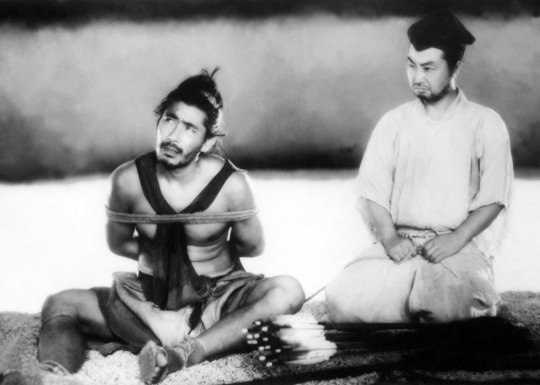
For the 20th Academy Awards in 1948, AMPAS’ Board of Governors created an honorary award for Best Foreign Language Film. At first it was not a competitive award. There were no nominees, the Board would select just one film and while the honorary award was presented during the ceremony, news of the winner would often be announced before the ceremony. From 1948 to 1956, eight foreign language films were awarded, including SHOESHINE (’46) and BICYCLE THIEVES (’48) from Italy; MONSIEUR VINCENT (’47), THE WALLS OF MALAPAGA (’49) and FORBIDDEN GAMES (’52) from France; and RASHOMON (’50), GATE OF HELL (’53) and SAMURAI I: MUSASHI MIYAMOTO (’54) from Japan. Interesting to note that they completely skipped the award in 1954 and no explanation was given as to why.
The special achievement award morphed into a competitive one in 1957. Countries could submit one film for competition as long as they fit the Academy’s strict criteria. Films had to be longer than 40 minutes to be considered feature length, from a country outside the US and include more than 50% non-English dialogue. But of course, to be considered, English-language subtitles were necessary. Only the country’s officially designated representative could submit a film for consideration. The Academy would then select five nominees from the submissions and members voted on secret ballots. The rules shifted over time. Since 2006, it’s no longer required that the language spoken in the film be the most commonly spoken language of that country. Also rules about both public and private Academy screenings in the Los Angeles area have changed and now a film no longer has to be screened in the U.S. to qualify. Technically, the winner of the Oscar is the country of origin and not the director or producer, however they are usually the ones to accept the award at the ceremony.
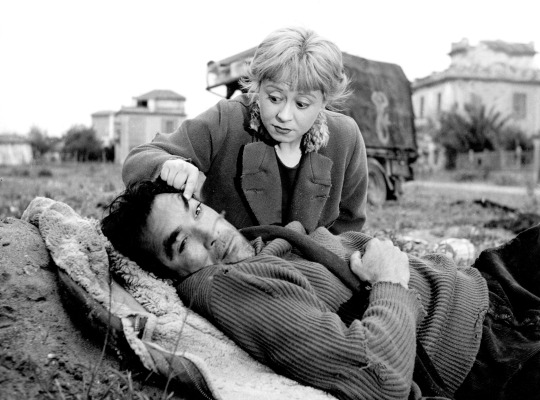
The first Best Foreign Language Film was presented by AMPAS president George Seaton to Italy for Federico Fellini’s LA STRADA (’54). The award was accepted by producer Dino De Laurentiis. Early winners included France’s BLACK ORPHEUS (’59) and MON UNCLE (’58), Sweden’s THE VIRGIN SPRING (’60) and Italy’s NIGHTS OF CABIRIA (’57) and 8-1/2 (’63). Some critically acclaimed foreign films were overlooked because they either weren’t submitted by their native country or were disqualified for some reason or another. These included major films like LA DOLCE VITA (’60) and THE SEVENTH SEAL (’57). And if a foreign film was screened in the US, it had a better chance at winning the coveted prize. Once a foreign language film won the Best Foreign Language Film Oscar, it would be screened in the U.S., qualifying it for other competitive categories, like Best Director, Best Writing, Best Costume Design, etc. the following year.
Presenters for this category have almost always been either actors or the current AMPAS president. Jack Valenti, longtime president of the Motion Picture Association of America (MPAA) holds the record for most presentations for this category. Having recently watched all of the televised presentations and acceptance speeches on the Academy’s YouTube channel, I couldn’t help but notice the consistent trend of flowery speeches about the universal language of cinema. A few presenters stood out. Stars like Jane Fonda and Anthony Quinn openly criticized the use of the word “foreign” in the category. It’s always been required that the winner deliver their speech in English. As acceptance speeches grew longer over time, many filmmakers, especially from war torn nations, would seize the moment and the platform to deliver a poignant message.

There are three acceptance speeches that stand out to me. Perhaps the most famous one is from 1999 when actor/director Roberto Benigni accepted the award for LIFE IS BEAUTIFUL (’98). Benigni leapt from his seat, walked over guests, hopped up the steps and gave presenter Sophia Loren the biggest hug. His speech was incredibly emotional and there wasn’t a dry eye in the house by the end of it. My second favorite was delivered by director Alfonso Cuaron for his film ROMA (2018). While the Academy hasn’t publicly admitted this, I think Cuaron’s speech, in which he very gently criticizes the category and thanks the nominees who “have proven that we are part of the same ocean,” influenced change. The following year the Academy quickly pivoted and changed the category to Best International Feature Film. Dutch director Fons Rademakers whose film THE ASSAULT (’86) won in 1987, delivers my favorite speech. In it, he speaks to the general aversion to foreign language films by saying “This Foreign Language Oscar has a request... please don't let subtitles scare you off as much as they seem to do from time to time.” Take his advice. Watch more international films!
#International films#Academy Awards#Oscars#best foreign language film#Best Oscar#history#tcm#Turner Classic Movies#Raquel Stecher
93 notes
·
View notes
Text
The Oscar Effect on Careers By Susan King
Does winning an acting Oscar change the career of the recipient? The answer is yes and also no. Take Brad Pitt, who won Best Supporting Actor last year for ONCE UPON A TIME IN HOLLYWOOD (2019). He’s a veteran superstar with over three decades in Hollywood. So, the award is more icing on the cake for his career. But that wasn’t the case when he earned his first nomination for Terry Gilliam’s 12 MONKEYS (‘95). Pitt was on a hot streak since gaining attention for his roles in THELMA & LOUISE (‘91), A RIVER RUNS THROUGH IT (‘92), INTERVIEW WITH THE VAMPIRE (‘94) and LEGENDS OF THE FALL (‘94), and his first Oscar nominations gave his career an even bigger boost.
Similar to Pitt, many young actors discovered their stock in Hollywood with Oscar gold, but nominations and wins have effected various stars’ careers in different ways. Here’s a look at various Oscar winners and how the award affected their careers.
Martin Landau

The Oscar has changed the career trajectory of many veteran actors. Martin Landau was making such TV movies The Harlem Globetrotters on Gilligan’s Island (’81) that just squandered his talents. But that all changed when he earned his first Oscar nomination for Francis Ford Coppola’s TUCKER: THE MAN AND HIS DREAM (’88), followed by a second for Woody Allen’s CRIMES & MISDEMEANORS (’89), eventually winning for his poignant performance as Bela Lugosi in Tim Burton’s ED WOOD (’94).
Ironically, Landau told me in a 2010 L.A. Times interview he didn’t think he could play the Dracula star. “It’s a Hungarian morphine addict, alcoholic who has mood swings,” he remembered telling Burton. “That would be hard enough, but it has to be Bela Lugosi! I said I don’t know if I can do this, but let’s do some tests.”
Makeup artist Rick Baker transformed Landau into the elderly frail actor. Burton, he recalled, looked at the tests and thought he was 50% Lugosi. Landau believed he captured the icon in fleeting moments. “I said if I can do it 10% of the time, I can do it 100% of the time. They have to accept me as Lugosi in the first five minutes or we don’t have a film. It was not an impersonation for me. He had to be a human being.”
Melvyn Douglas

Similarly, Melvyn Douglas, who was best known for his comedic roles in the 1930s and ‘40s in such films as NINOTCHKA (’39), had seen his career slow in the 1950s because of his liberal political leanings. But he came back to the forefront in 1960 after winning a Tony Award for Gore Vidal’s THE BEST MAN, and then receiving his first of two supporting actor Oscars for his turn as Paul Newman’s hard-working Texas rancher father in Martin Ritt’s HUD (’63). Seven years later, he received a Best Actor nomination as Gene Hackman’s father in I NEVER SANG FOR MY FATHER (’70), ultimately winning his second Oscar as the president of the United States in Hal Ashby’s BEING THERE (’79).
Luise Rainer

The German stage actress was signed to an MGM contract in the mid-30s. But the free-spirited Rainer, who considered herself an actress and not a movie star, was always at logger heads with studio head Louis B. Mayer. She told me in a 2011 L.A. Times interview, Mayer “couldn’t make me out. You know it was a little bit difficult for him. I wasn’t the type that he was used to. So, the poor man didn’t know what to do with me. For my first film, ESCAPADE [‘35], William Powell said [to him] you got to star that girl…My first film made me a star.”
Rainer won Best Actress as famed performer Anna Held in THE GREAT ZIEGFELD (’36) and as a Chinese peasant in THE GOOD EARTH (’37). All but one of her subsequent films didn’t do well at the box office and she left Hollywood. She made one film, HOSTAGES (’43), guest starred on some TV series including a voyage on The Love Boat and had a small part in indie film THE GAMBLER (’97).
Art Carney

One of the greatest comedic actors, Carney came to fame in the Honeymooners sketches on The Jackie Gleason Show and The Honeymooners series as Ralph Kramden’s (Gleason) best pal, the clueless sewer worker Ed Norton. He won five Emmys for his work with Gleason. Carney also originated the role of neatnik Felix Ungar opposite Walter Matthau’s Oscar Madison in the 1965 Broadway production of Neil Simon’s The Odd Couple.
Well-known that he had a drinking problem, Carney wasn’t working that much in film or TV in the late 1960s and early 1970s. In fact, he tried to convince Paul Mazursky he wasn’t right for the filmmaker’s heartfelt dramedy HARRY & TONTO (’74) about a curmudgeonly old New Yorker who travels with his cat across country after he loses his apartment. Mazursky told me in a 2011 L.A. Times interview that no one wanted the part. James Cagney, Laurence Olivier, Cary Grant and even Danny Kaye were among those who turned him down.
He had seen Carney on Broadway in 1957 in a dramatic role in The Rope Dancers. “Of course, I had seen him in The Honeymooners. He didn’t want to do it,” noted Mazursky. “He said ‘I’m 59 years old and you want this guy to be in his 70s.’ I said, ‘Art, this is the first time I met you and you look like you are in your 70s – you’re balding, you wear a hearing aid and you have a bum leg.’ He told me, ‘You don’t want me, I’m an alcoholic.’ He had one bad night then nothing else. He had been out on a binge and he showed up on location in Chicago in a taxi in the morning loaded. I took him up to his room, put him in the shower and made him a pot of coffee. He was easy to direct.”
Carney won both the Golden Globe and the Academy Award for his turn, beating out the likes of Jack Nicholson for CHINATOWN and Al Pacino for THE GODFATHER PART II. And he did some of his best work post-Harry including as an aging Los Angeles private detective in the charming THE LATE SHOW (’77) and as a senior who teams up with his buddies (George Burns and Lee Strasberg) to rob a bank in GOING IN STYLE (’79). He earned his sixth Emmy for the TV movie Terrible Joe Moran (’84), which was James Cagney’s last film. Carney’s final film was the 1993 Arnold Schwarzenegger disaster LAST ACTION HERO. “I’m outta here” was the last line Carney ever uttered on film.
60 notes
·
View notes
Text
Revisiting Oscar-Nominated and Winning Pictures By Susan King
We all have our favorite Oscar winners that we love to watch over and over again. But there are numerous Oscar winners and nominees that have gained new life thanks to TCM, HBO Max and DVD that are definitely worth revisiting. Here are some of my favorites:
RANDOM HARVEST

I interviewed the legendary funny man Carl Reiner a few months before his death and the conversation drifted to RANDOM HARVEST (’42) and how much he loved the romance. Robert Redford is also a fan. In the 1990s, he was planning on doing a remake, and in 2014, it was announced that Julian Fellowes (Downton Abbey) was hired to pen a remake. The handsome MGM production based on James Hilton’s bestseller starring Ronald Colman and Greer Garson was a huge hit that year and was nominated for seven Oscars including Best Film, Actor for Colman, Actress in a Supporting Role for Susan Peters and Director Mervyn LeRoy.
Both Colman and Garson had great success in other Hilton adaptations – Colman starred in LOST HORIZON (’37) and Garson made her U.S. film debut and earned her first Best Actress Oscar nomination in GOODBYE, MR. CHIPS (’39). RANDOM HARVEST is often overlooked by the other big MGM film released in 1942, William Wyler’s MRS. MINIVER. Not only was the stirring drama about a British family attempting to survive the years of World War II a blockbuster at the box office, but it also won a striking eight Oscars.
But I think RANDOM HARVEST is the more engaging film. It’s hard not to fall in love with this romantic tale with Colman at his most dreamy as a shell-shocked amnesiac veteran of World War I (Colman was wounded in the global conflict) named Smith who falls in love and marries a loving young entertainer (Garson). But Smithy, as Garson’s Paula calls him, is hit by a car on his way to a job interview and wakes up with no memory of the past three years but does remember who he really is – an aristocrat by the name of Charles Rainier.
Will true love reunite these two? The sigh level is very high with RANDOM HARVEST and this love story has a very strong place in my heart.
NONE BUT THE LONELY HEART
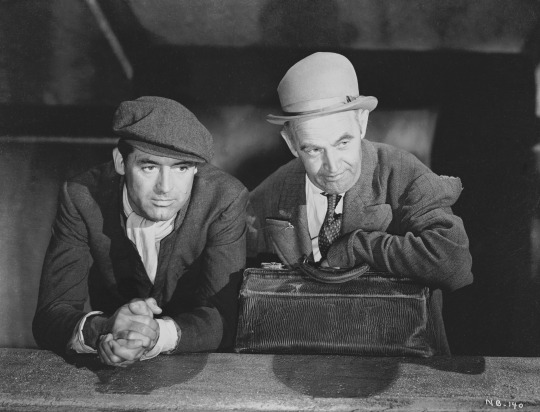
I’ve had more than a few people ask me why I like NONE BUT THE LONELY HEART (’44) so much. It’s depressing, they say. It’s downbeat, they say. But I think it’s a chance to see Cary Grant in a rare break out of his “Cary Grant” suave, sophisticated image. Adapted and directed by Clifford Odets from the novel by Richard Llewellyn (How Green Was My Valley), NONE BUT THE LONELY HEART casts Grant as Ernie Mott, a Cockney drifter who returns home to his Ma (Ethel Barrymore). When he learns that she’s dying of cancer, Ernie stays to help run her second-hand shop. But Ernie can’t stay out of trouble, joining forces with a gangster stealing cars and pursuing the mobster’s wife (June Duprez).
Meanwhile, his neighbor Aggie (Jane Wyatt) is madly in love with him and tries to save Ernie from a life of crime. The film was generally warmly received, earning four Oscar nominations and winning supporting actress for Barrymore. She shot her scenes during her two-week vacation from her Broadway triumph The Corn Is Green, and the Academy Award transformed the Broadway star into a much-in-demand film actress. She would go on to earn three more Oscar nominations.
Grant, who had earned his first Oscar nomination three years earlier for PENNY SERENADE (‘41), didn’t attend the Academy Awards where Bing Crosby won best actor for GOING MY WAY. Grant never earned another Oscar nomination, but received an Oscar honorary in 1970.
NIGHT MUST FALL

Handsome and charismatic Robert Montgomery was one of MGM’s top leading men in the 1930s, best known for his work in comedies including PRIVATE LIVES (’31) and FORSAKING ALL OTHERS (’34). Though he did an occasional dramatic part, nothing really stretched him as an actor until NIGHT MUST FALL (’37). Montgomery had long been bugging MGM head Louis B. Mayer for better roles. He supposedly allowed Montgomery to do NIGHT MUST FALL because the studio head thought the actor would be embarrassed when the movie failed. Montgomery later said, “they okayed me playing in it because they thought the fan reaction in such a role would humiliate me.” He went so far as to help subsidize the film’s production budget.
Based on the play by Emlyn Williams which ran on Broadway in 1936, NIGHT MUST FALL finds Montgomery playing Danny, a serial killer who just happens to have a trophy from his latest victim—her head—in a hatbox. Danny charms his way into the heart and home of a wealthy elderly woman (Dame May Whitty, reprising her London stage role). Rosalind Russell, who made five films with Montgomery, plays the elderly woman’s niece who has her suspicions about Danny but can’t convince her aunt that she’s in danger. Both Montgomery and Whitty earned Oscar nominations.
Though Montgomery returned to the comedy genre after NIGHT MUST FALL, he began directing films such as LADY IN THE LAKE (’46) and found great success in TV in the 1950s with the anthology series Robert Montgomery Presents, which often featured his daughter Elizabeth.
THE NAKED SPUR
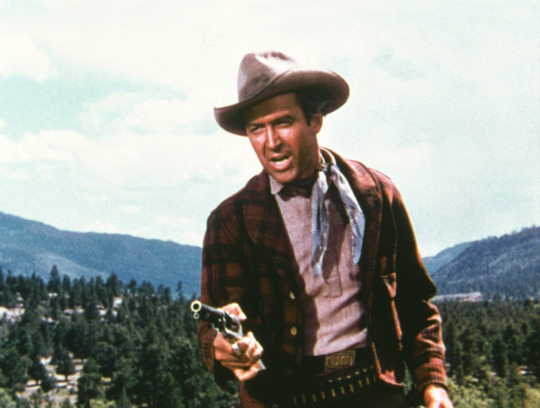
Jimmy Stewart’s image took a 180 degree turn in the 1950s thanks to Alfred Hitchcock with REAR WINDOW (’54) and VERTIGO (’58), but most notably in the five Westerns he made with Anthony Mann. Far from the boy-next-door character he played pre-World War II, Stewart was transformed into conflicted, troubled men – anti-heroes who often could be as villainous as the bad guys who peppered these sagebrush sagas. (Mann also directed Stewart in three non-Westerns).
THE NAKED SPUR (’53), which earned a screenplay Oscar nomination for Sam Rolfe and Harold Jack Bloom, is my favorite of their collaborations. Stewart really digs deep into the character of Civil War veteran turned bounty hunter, Howard Kemp. He’s angry and bitter having lost his land during his conflict. Kemp hopes he can get his land back by working as a bounty hunter. And he’s doggedly determined to get outlaw Ben Vandergroat (a fabulously vile Robert Ryan). Along the way, he encounters two men (Millard Mitchell and Ralph Meeker) who join him on his journey. And when he finds Vandergroat, he also discovers he has a young woman (Janet Leigh) with him. Intelligent, often disturbing and brilliantly acted, THE NAKED SPUR is an exceptional exploration of the dark side of humanity.
#Oscars#Academy Awards#nominations#westerns#crime#drama#old Hollywood#classic#Jimmy Stewart#robert montgomery#Cary Grant#ronald colman#greer garson#TCM#Turner Classic Movies#Susan King
101 notes
·
View notes
Text
The Oscar Worthiness of BLOCK-HEADS By Rowan Tucker-Meyer
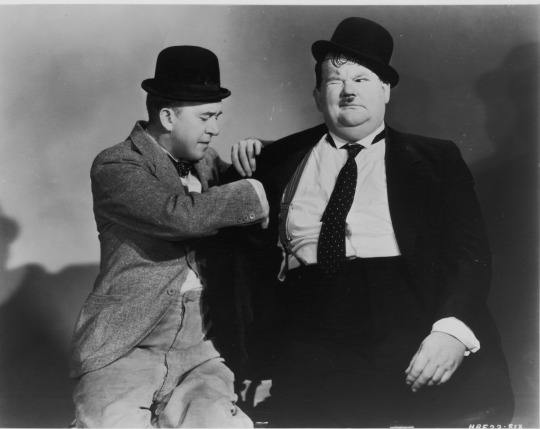
In this year’s 31 Days of Oscar lineup (also available on WatchTCM), among all of the classics we’ve watched and rewatched many times, there is one movie that may at first glance appear to be slightly out of place: the Laurel and Hardy film BLOCK-HEADS (’38). Although it is not as well known or acclaimed, I believe that it is every bit as good as most of the other Oscar-nominated films being shown this month.
In BLOCK-HEADS, Laurel and Hardy portray, as the title suggests, two not-so-bright fellows. The film opens with footage of World War I and we meet Stan and Ollie, two soldiers in the trenches. While the rest of the company goes into battle, Stan is ordered to stay back and guard the trench. In a delightfully dark turn of events, the other soldiers never return, news of the eventual armistice never reaches Stan and he dutifully guards the trench… for 21 years. The year is now 1938, and Stan has been subsisting solely on cans of beans. We even see a humongous mountain of 21 years’ worth of bean cans; it is a haunting image. He is discovered and returned to society, and when Ollie sees his friend’s photograph in the paper he decides to invite him over for dinner. Mayhem, needless to say, ensues.
I first saw this film a few months ago and it was one of my most delightful movie-watching experiences in recent memory. I hadn’t laughed so hard at a movie in a long time. With a running length of just 57 minutes, it’s densely packed with great gags which I won’t attempt to describe here. I’ll just say that my personal favorite gag is the one involving a football and leave it at that.
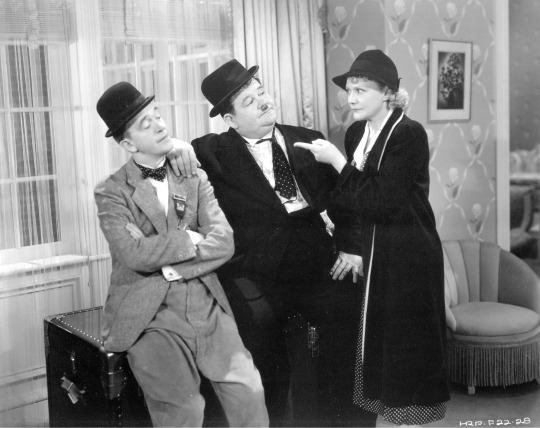
BLOCK-HEADS was nominated for Best Original Score. Marvin Hatley’s score is certainly good (even if it was often difficult to hear over the sound of my uproarious laughter), but it does seem a bit odd that it’s all that BLOCK-HEADS was nominated for, since it’s just about the last thing you think about when you finish watching this movie. You’re thinking about the hilarious performances by Laurel and Hardy – their gestures and facial expressions – the way Hardy reflexively touches his hat and the way Laurel sways side to side when he’s standing around, not really knowing what to do with himself. Or maybe you’re thinking about the script with its brilliant setups and payoffs. But the actors, writers and directors of movies like BLOCK-HEADS would rarely find themselves nominated for awards.
The film’s director, John G. Blystone, was never nominated for an Oscar. Neither were any of the film’s five writers. Laurel received an honorary Oscar in 1961, but apart from that, Laurel and Hardy themselves were never nominated for anything, even though their performances have aged remarkably well. As for their films, BLOCK-HEADS and WAY OUT WEST (’37) earned Best Original Score nominations, while THE MUSIC BOX (’32) won and TIT FOR TAT (’35) was nominated for Best Live Action Short Subject, Comedy. Tellingly, their work was mainly recognized when competing in a category specifically devoted to comedy, which was discontinued in 1937. Although today Laurel and Hardy are beloved icons and many classic film lovers will agree that their films have stood the test of time, those movies simply weren’t seen as worthy of much recognition when they were first released, except in peripheral categories. (I find it amusing that, although BLOCK-HEADS had no realistic chance of getting a Best Picture nomination at the 11th Oscars, it currently has a better IMDB rating than 6 of the 10 movies that were nominated instead.)
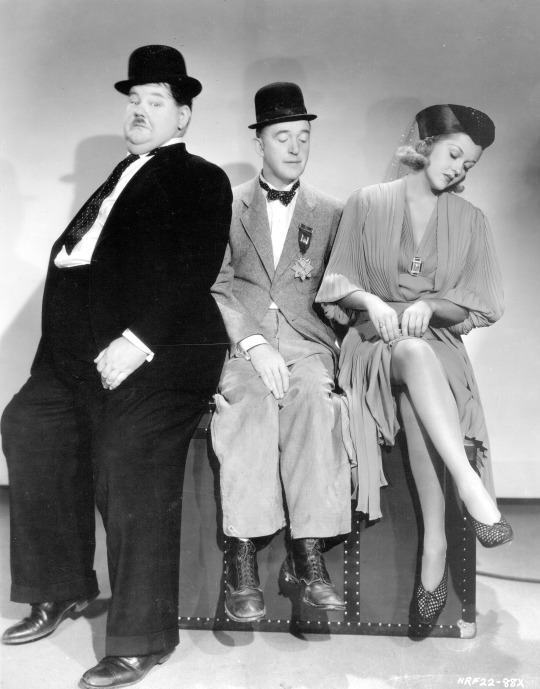
Comedies, particularly “lowbrow” comedies such as Laurel and Hardy’s slapstick-heavy movies, are seldom honored by the Oscars. The films of classic comedians such as Abbott and Costello, the Marx Brothers, Olsen and Johnson and W.C. Fields were regularly ignored. And this trend persists to the present day, perhaps to an even greater extent than in the 1930s. Best Picture nominees are notoriously drama-dominated, and the comedies that do get nominated are nearly always “comedy-dramas” like JOJO RABBIT (2019) which have an underlying seriousness at their core. Silliness for its own sake consistently goes unrewarded, whether it’s from Melissa McCarthy, Jack Black, Will Ferrell or Tyler Perry. Whether or not you think today’s comedians are comparable to those of the ‘30s and ‘40s, it is interesting to consider that Laurel and Hardy may have been viewed in their time the same way that critics receive an Adam Sandler comedy today, only for them to become respected decades later.
Great slapstick is really quite beautiful. Its humor is ageless and universal, striking some indescribable chord in our collective human psyche. What is it about Oliver Hardy slipping and falling on a rolling pin that makes us laugh? I’m not sure, but it’s hard to deny that slapstick has a mysterious power. Silliness deserves respect, especially when it is executed as exquisitely as in films like BLOCK-HEADS.
#Comedies#Oscars#academy awards#Best Song#Laurel and Hardy#1930s#slapstick#TCM#Turner Classic Movies#Rowan Tucker Meyer
62 notes
·
View notes
Text
The Authentic Allure of ALMOST FAMOUS By Constance Cherise
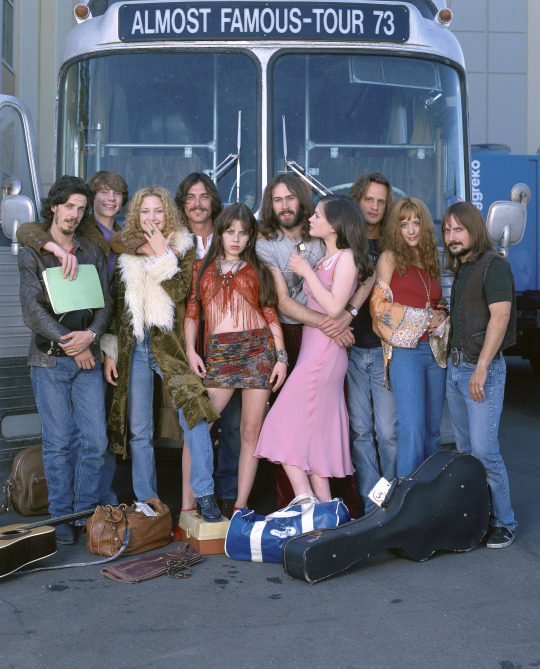
According to actress Nancy Olson, before filming on the set of SUNSET BLVD. (‘50) in Norma Desmond's mansion, the cameraman would rub his hands together crushing stone which created dust, then blew the dust on the camera lens, an effect, which encapsulated the ambiance of stagnant corners haunted with memories of the past. One of the most difficult tasks to execute in a retrospective period piece is to precisely immerse an audience. It takes more than vintage vehicles and costumes to fully capture the aura of an era.
Reverting to centuries ago seems an easier feat than reflecting the later years of the 20th century, perhaps because many of us can still attest to it. With most modern-day period pieces, what should be exceptional based on the subject matter alone, unfortunately resembles a costume party. A few feel-good films that readily accomplished this feat of transporting their audience include DAZED AND CONFUSED (‘93), THE SANDLOT (‘93), DETROIT ROCK CITY (‘99) and ROLL BOUNCE (2005). Although some of these films may not be hugely popular, each power-up their flux capacitor, fill the tank with plutonium and hurdle their audiences back in time.
We don't know what director/producer/screenwriter and Academy Award-winning Cameron Crowe sprinkled on his camera lens for ALMOST FAMOUS (2000, the film takes place in the ‘70s so take your pick). Still, the film, which celebrated its 20th anniversary in 2020, beams with the spirit of black lights, velvet posters, Don Kirschner’s Rock Concert and The Midnight Special performances. It would only stand to reason, as Crowe is an avid fan of classic film director Billy Wilder, director of SUNSET BLVD.
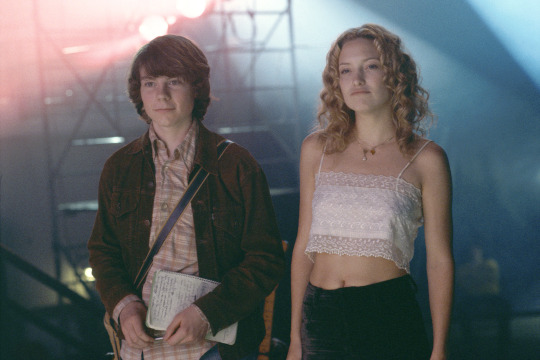
Based on Crowe’s true-life experience as a teenage reporter for Rolling Stone magazine, ALMOST FAMOUS mirrored classic film by layering the correct actors, costumes, dialogue, sets and of course an exacting soundtrack. For those of us mature enough to recall the ingrained crackle of a needle against vinyl and the scraping of a lead pencil against paper (all of us know that sound), from the opening credits, Crowe utilizes simple auditory cues and visuals powerful enough to immediately engross his audience until the film's end.
In his first feature film role, the innocence of Patrick Fugit’s portrayal is perfectly and adorably awkward. When Lester Bangs (Philip Seymour Hoffman) urges William (Fugit) “to be honest and unmerciful,” the look on William's face reveals a naive boy who is about to be eaten alive. Although not their first roles, the enchanting Kate Hudson and the fresh-faced Zooey Deschanel both shine in their breakout roles, with each demonstrating exceptional performances. And, if you ever had a doubt of which Philip Seymour Hoffman performance to watch, this may be it, or perhaps, every Philip Seymour Hoffman performance is the one to watch.
Truly, every performance in the film is exceptional. With almost half the cast being newcomers, in theory ALMOST FAMOUS should not have worked as seamlessly as it did, but according to Hudson during a recent ALMOST FAMOUS reunion, its synergy was the result of “...a magical group of people.”

Conjuring indelible memories by adeptly fusing scenes with music, ALMOST FAMOUS leaves a lasting impression on the psyche which had to be a painstaking process since creating such powerful associations means there can only be one exacting fit. If you’ve seen the film, I'd wager that every time you hear Elton John's “Tiny Dancer,” you recall a sunlit tour bus driving through cornfields with the occupants joining together in an impromptu sing-along, lending an entirely new appreciation for an old song, or if you happen to hear Brenton Wood’s “The Oogum Boogum Song” you recollect William dwarfed by boys supposedly his own age in the throes of puberty grooming themselves in a mirror. When Simon & Garfunkel’s “America” plays, we witness the exact moment a young boy converges with his future while running his fingers over newly discovered album covers as if taking them in by osmosis.
On the surface, ALMOST FAMOUS is about the once-in-a-lifetime adventure of a teenage journalist, but according to Crowe, and quite apparently, it's an endearing love letter to music. You certainly don't need to be a fan of ‘70s rock to enjoy ALMOST FAMOUS, you simply need to be a music fan period. Like revisiting an old time capsule, it’s is a film where you can easily lose yourself and even though the majority of us haven't toured with a rock’n’roll band during the ‘70s, ALMOST FAMOUS captures its journey so succinctly, hitting every note that it's difficult to convince yourself you weren't actually there. Billy Wilder would approve.
#Almost Famous#1970s#period piece#rock#Kate hudson#music#rock and roll#31 Days of Oscar#Cameron Crowe#phillip seymour hoffman#TCM#Turner Classic Movies#Constance Cherise
251 notes
·
View notes